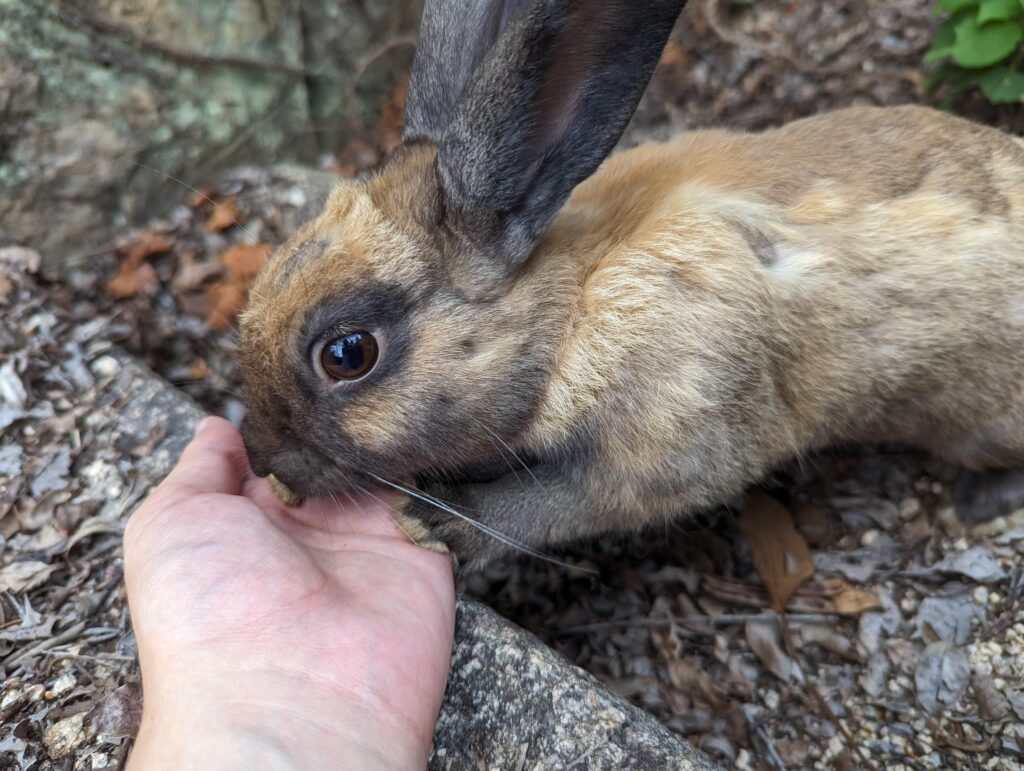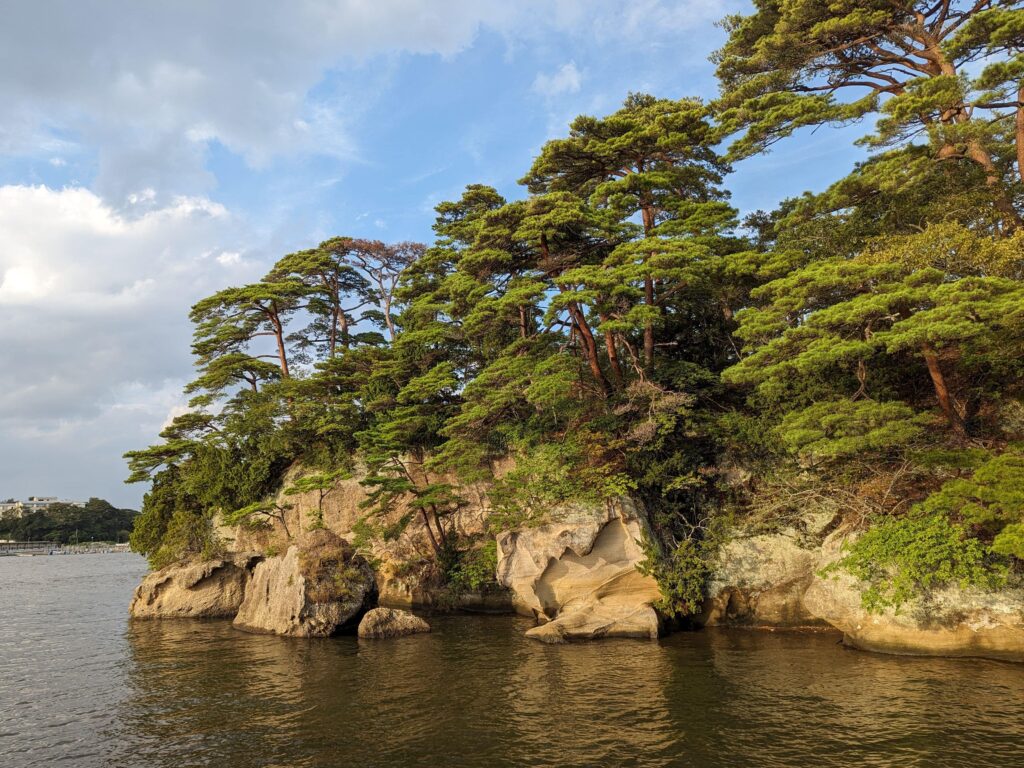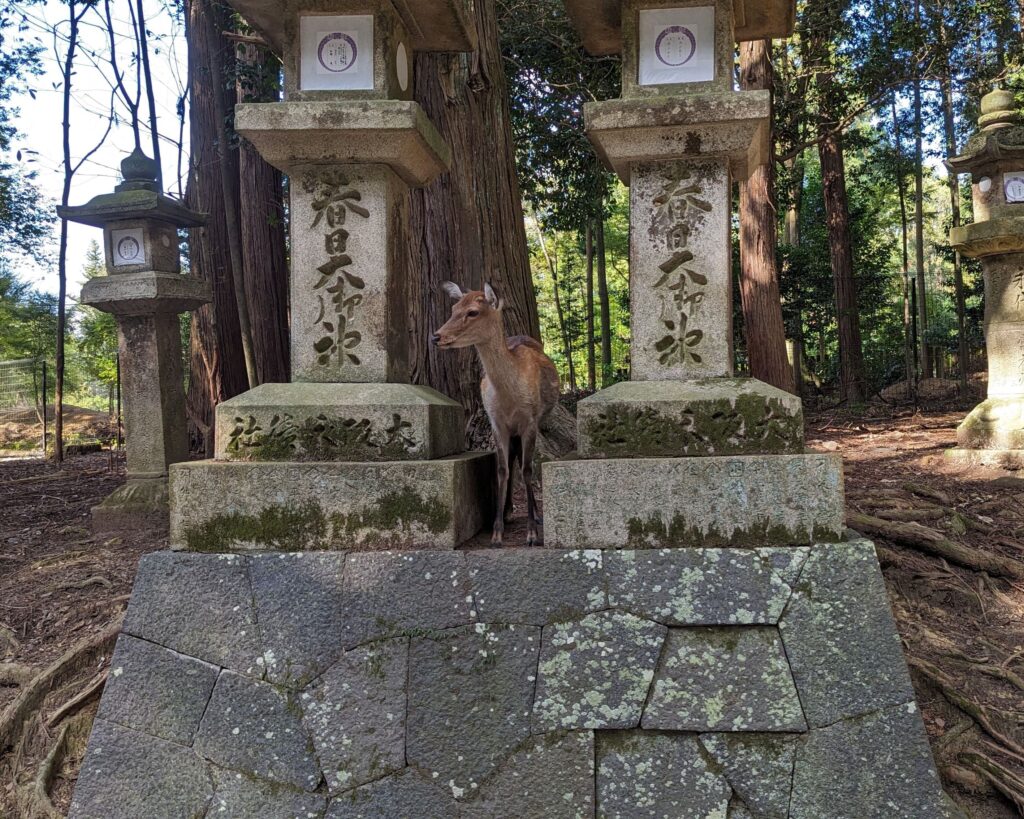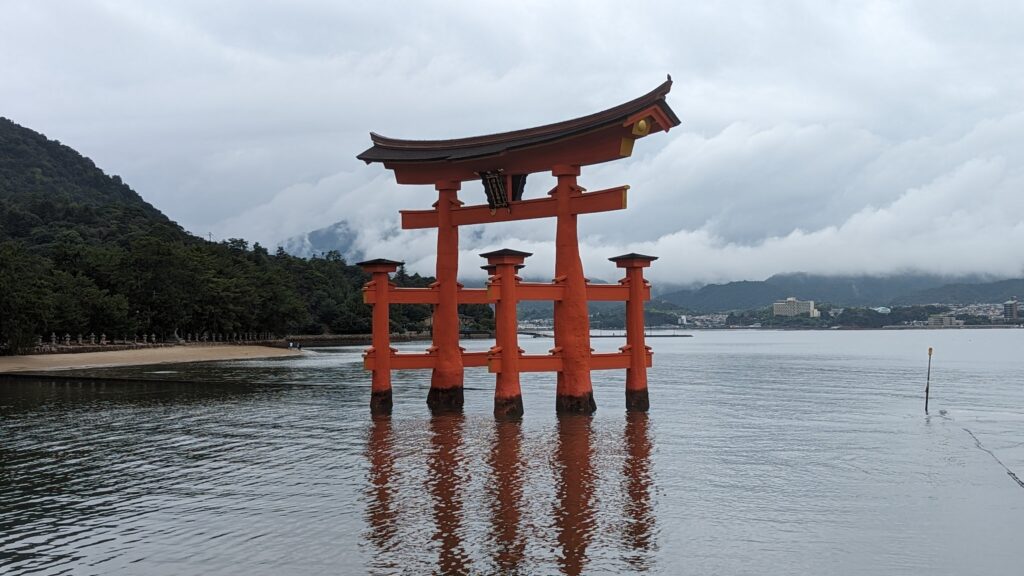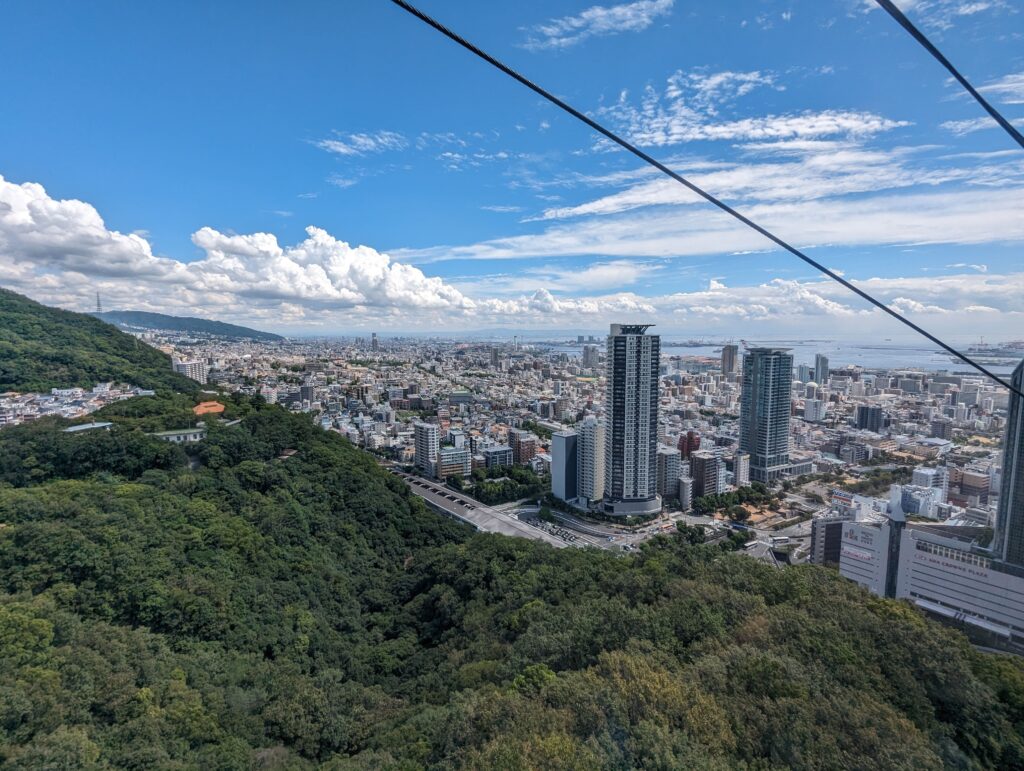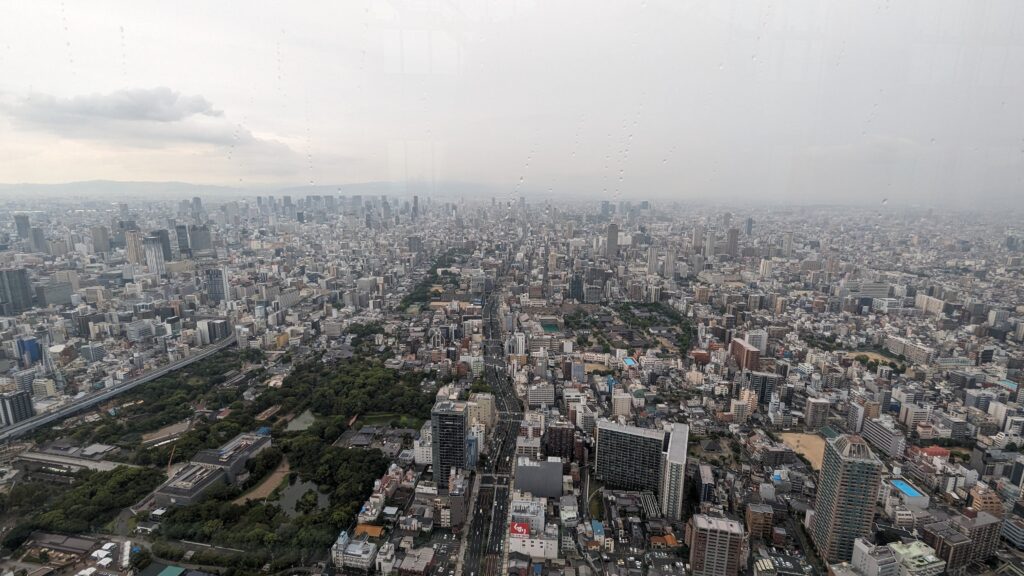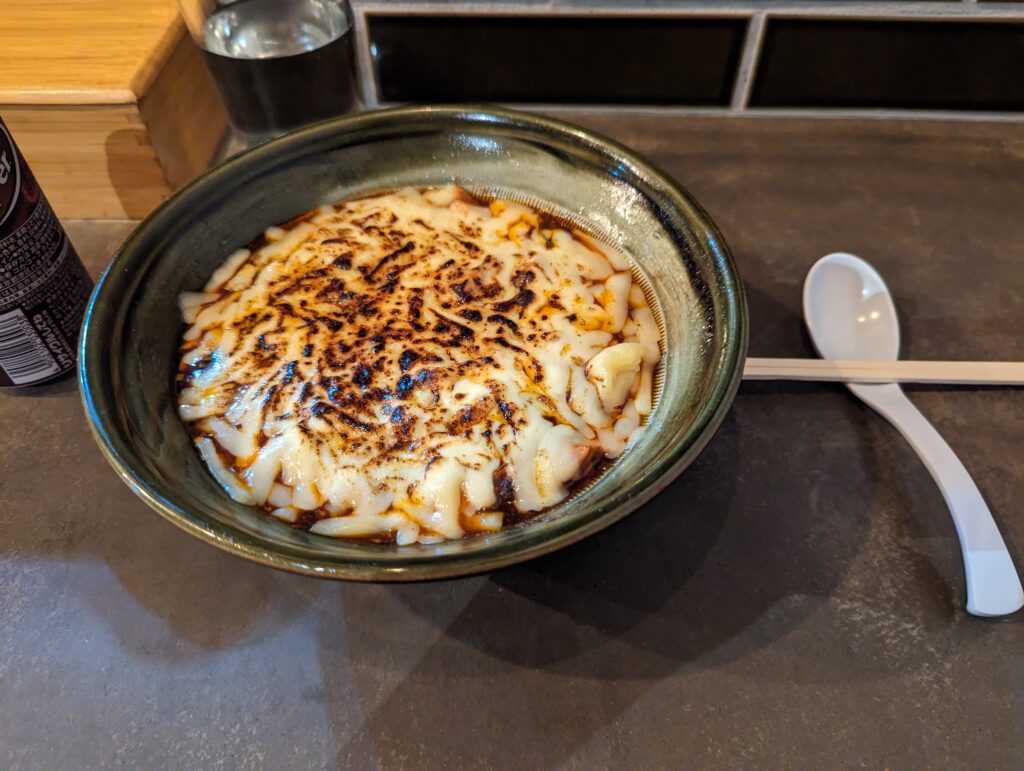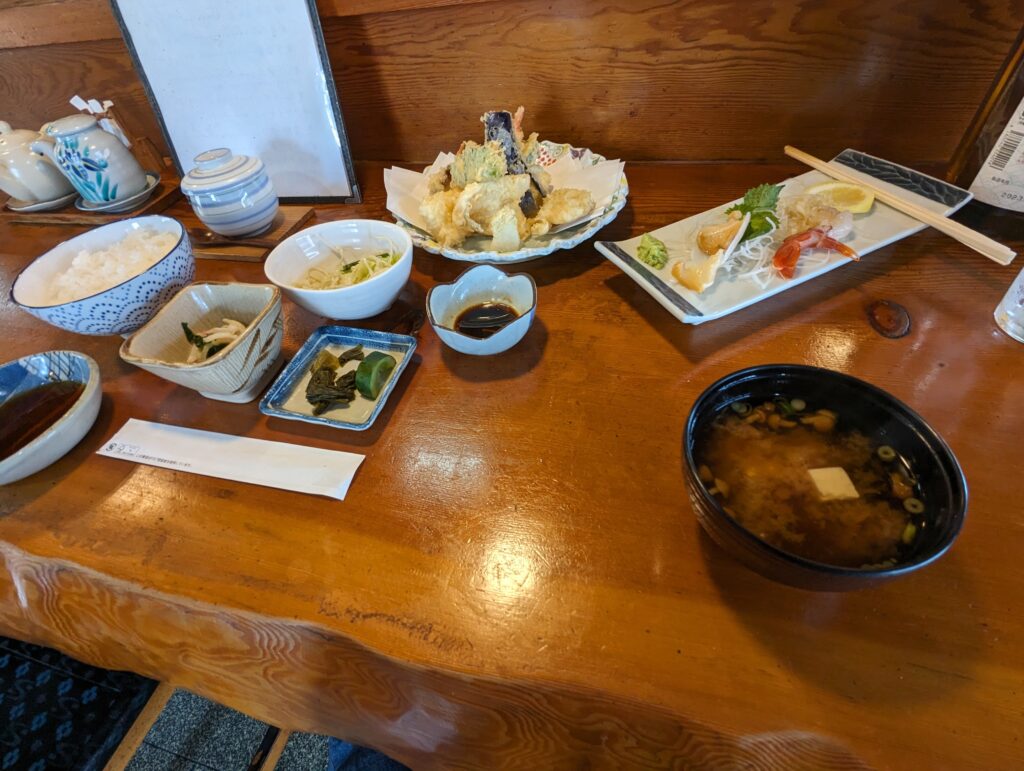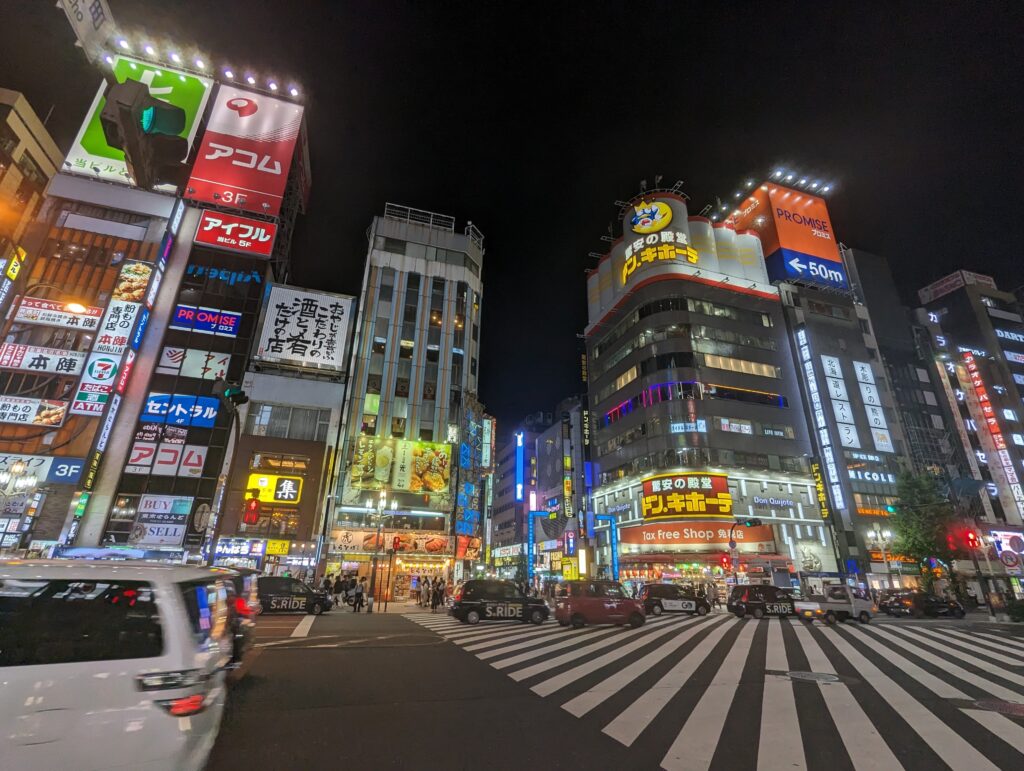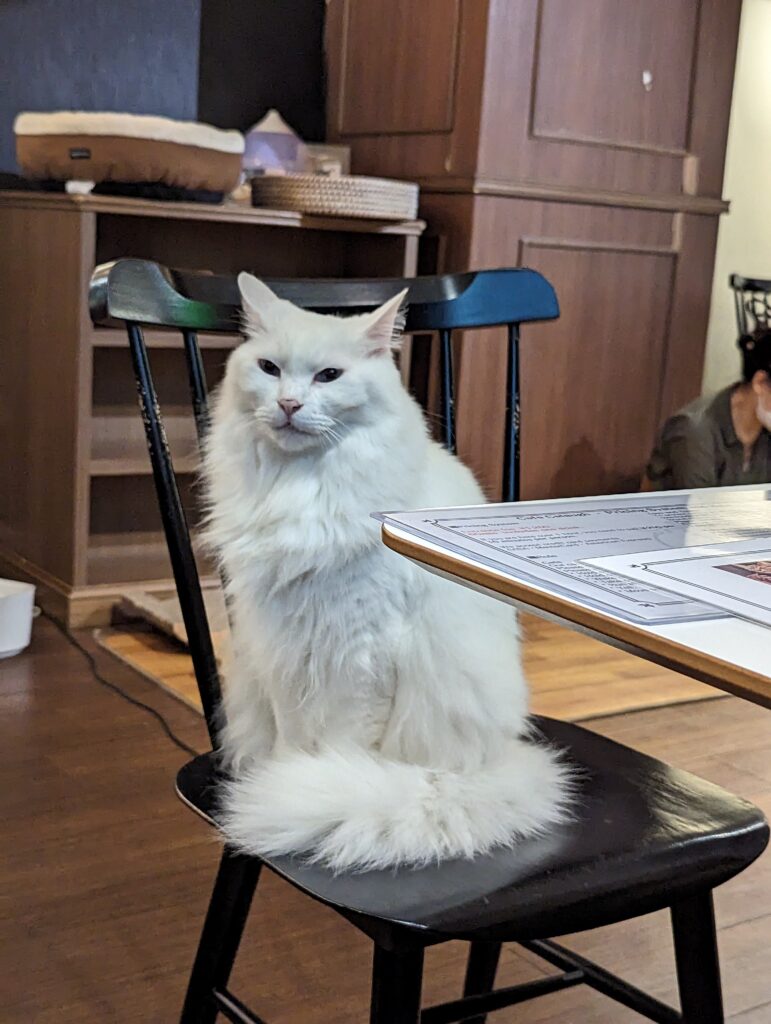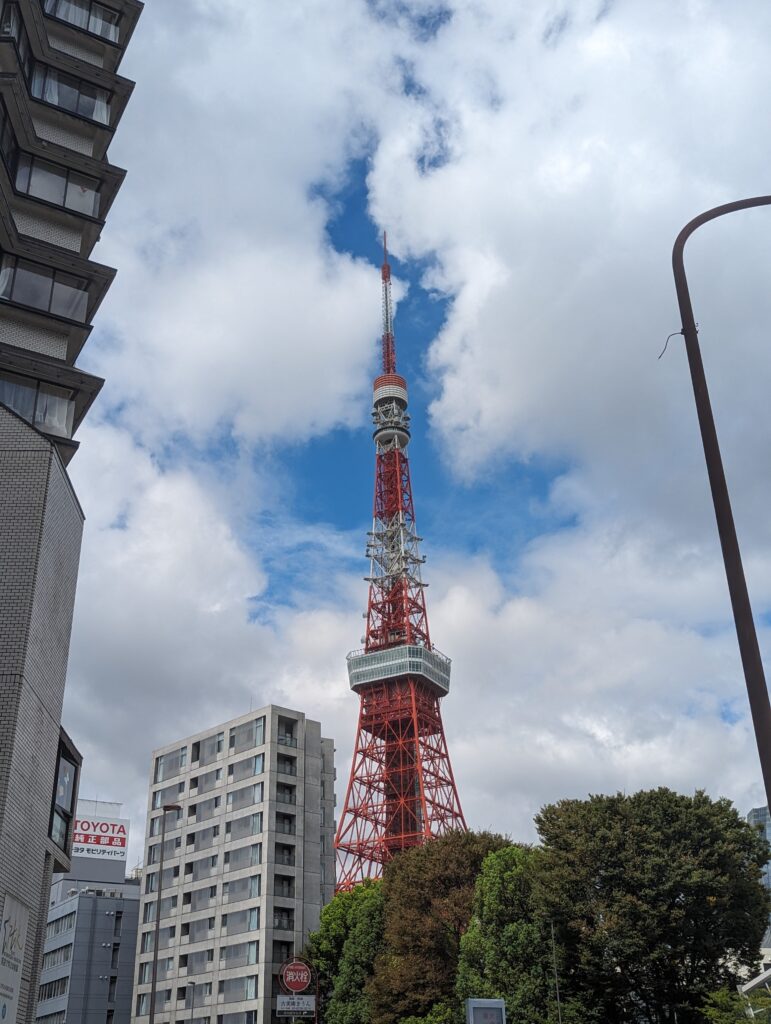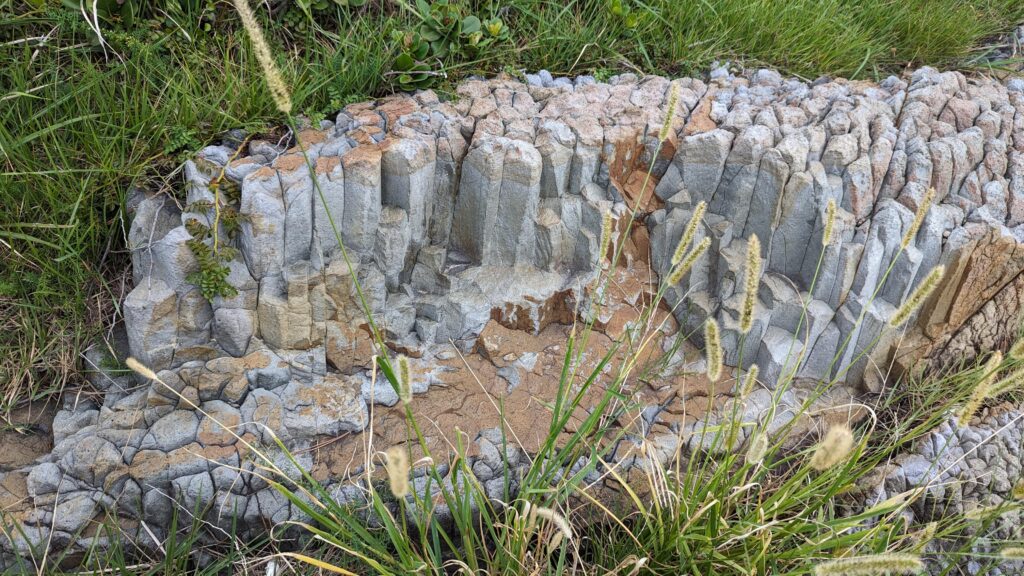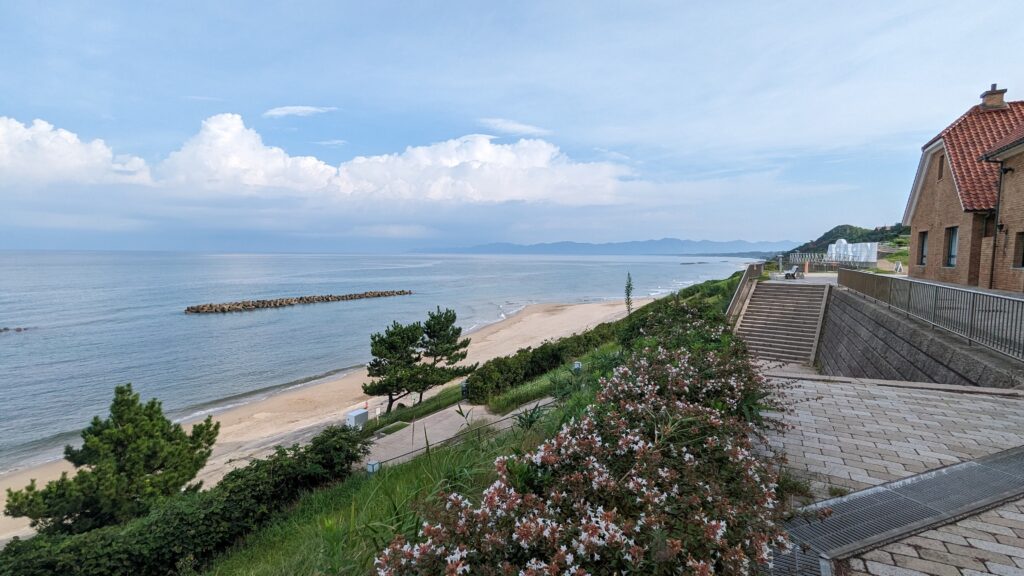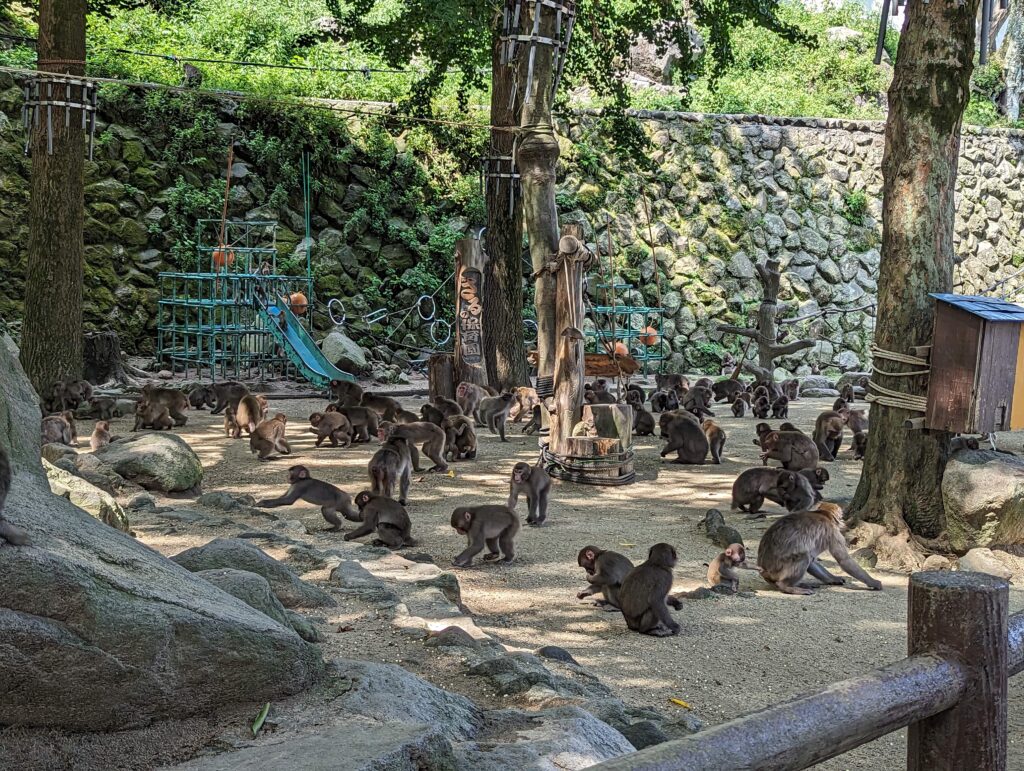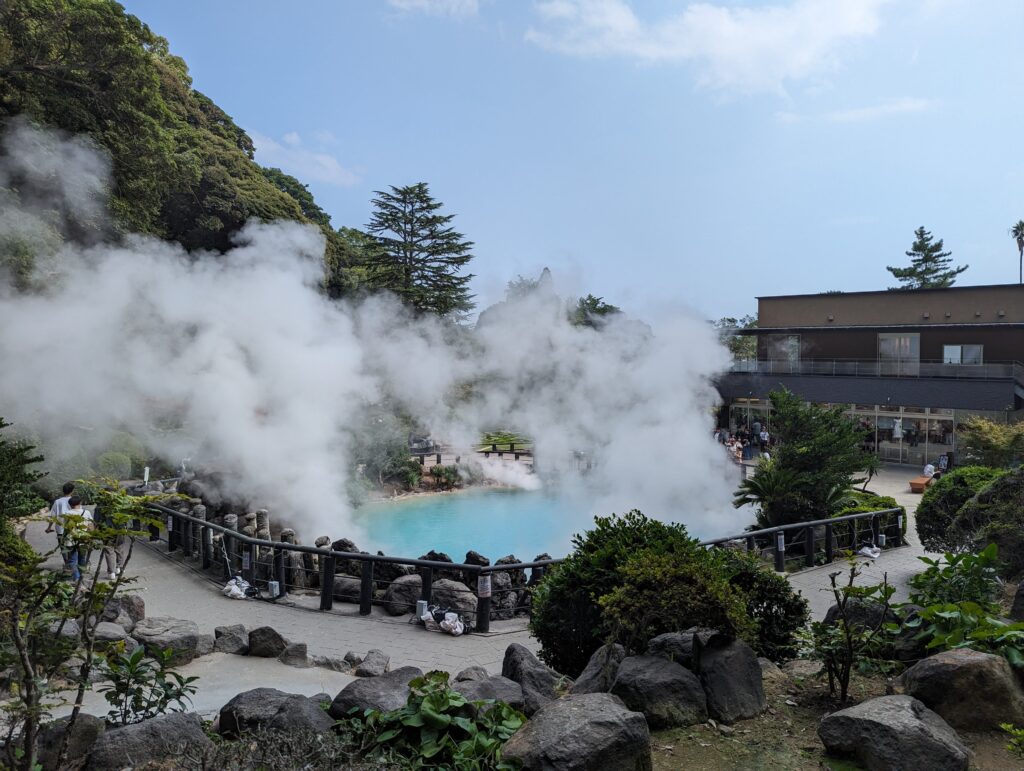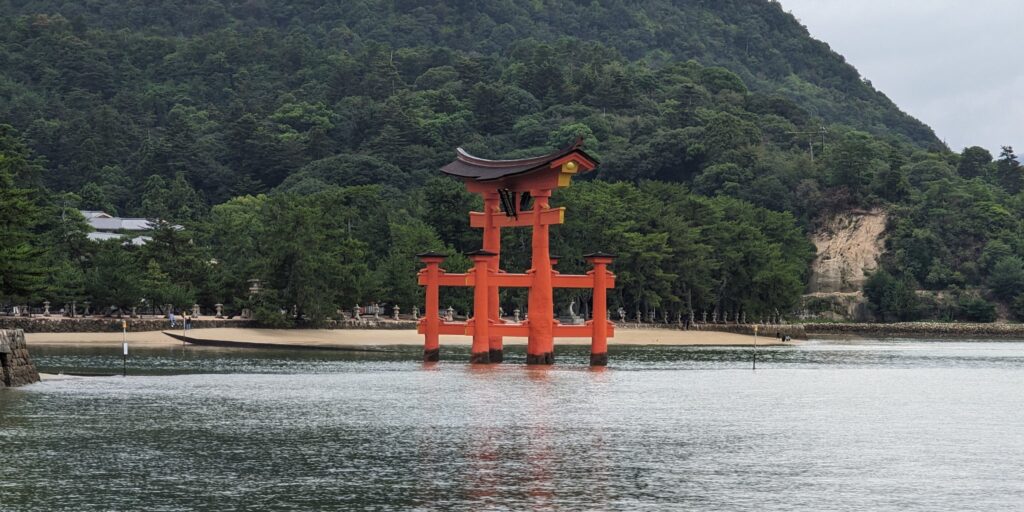Before I begin, let me clarify just one thing. This trip happened in September 2023, but I did not publish anything about it until now since it took me that long to finish this post. With this in mind, this was my first trip to Japan.
Most people know this country for its beautiful cherry trees, the speeding bullet trains (Shinkansen), amazing food, and rich culture. From sushi, traditional kimonos, and the serene beauty of nature to capsule hotels, anime, and the vibrant night streets of Osaka and Tokyo – one will find it all in Japan, the land of the rising sun.
It’s a country where the tapestry of tradition and technology weaves a remarkable story, the past and future meet on every corner, and the simplest customs coexist with the most cutting-edge innovations. It was precisely this captivating blend of contrasts that led me on an unforgettable solo adventure through the heart of Japan – a journey that would leave me forever changed.
My journey took me all across Japan – from Tokyo, the largest city in the world, to a small town near Izumo – from the neon streets of Akihabara to the ubiquitous temples of Japan – from having 20 different buttons on the toilet to not being able to use my credit card at a lot of places. I have seen it all; every corner of this enchanting country held fresh adventures and discoveries.
Am I really going there?
The ticket was purchased, accommodations were booked, and my travel itinerary was meticulously planned. Months before the summer break even began, I had acquired a new phone and a dependable travel backpack, ensuring I was thoroughly prepared for the upcoming adventure. As the summer break finally arrived, I shifted my focus from preparations to my summer job.
However, my afternoons were dedicated to a different endeavour – learning Japanese. I was determined not to arrive in Japan without some knowledge of the language, eager to have at least basic conversations with the locals. Learning Japanese was a challenging task. As you might know, or perhaps you don’t, the Japanese language employs three writing systems. The first two, katakana and hiragana, proved relatively manageable. Kanji, on the other hand, is in a league of its own, with approximately 50,000 characters in existence. Most people, however, are acquainted with around 2,000 kanji characters, considered the minimum for fluent communication. While I didn’t master that many, I could handle restaurant orders and introduce myself effectively.
Throughout the summer, my upcoming trip seldom occupied my thoughts. The days were consumed by work, leaving little room for anticipation. Then, quite suddenly, the day arrived when I found myself on a train to Vienna. Even at that moment, I couldn’t shake the feeling that it was just another train journey. After all, I had been to Austria before.
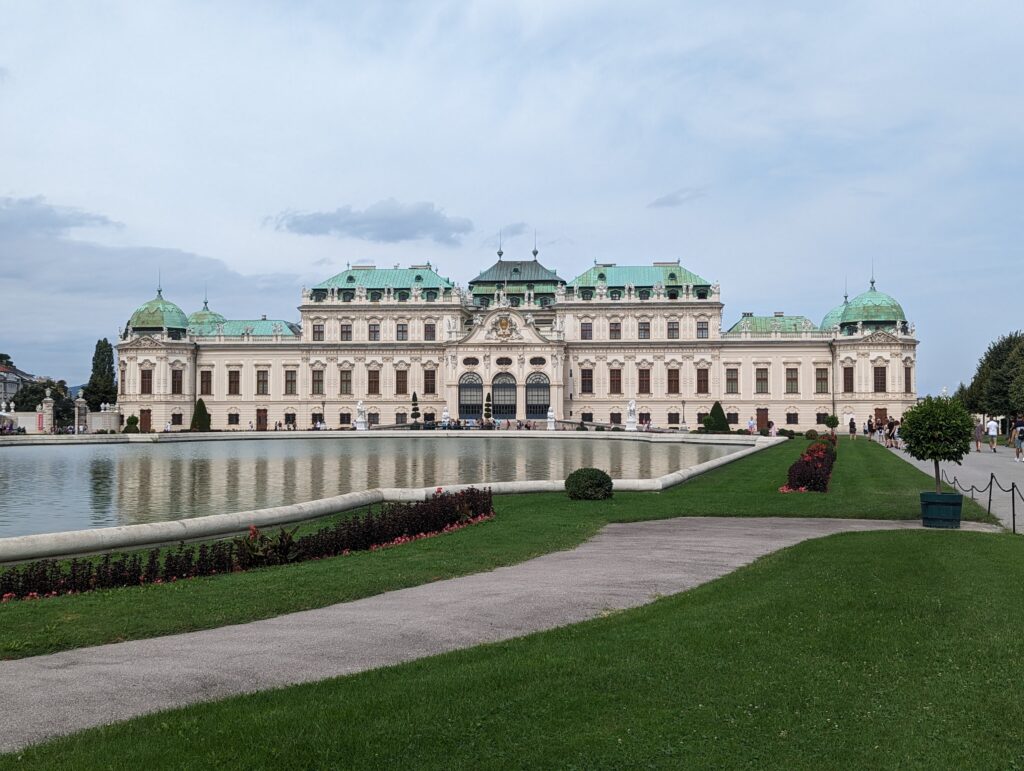
I decided to spend a night in Vienna because I didn’t want to rely on the train’s punctuality to get me to the airport on time. As some readers may know, Slovenian railways are notorious for their delays. The following day, I made my way to the airport, where I had an unexpected encounter with two Slovene girls while waiting for my plane. Little did I know, this would mark my last connection to home.
While sitting on the bench, a sudden announcement broke the quiet of the airport – it was boarding time. With my ticket and passport in hand, I patiently awaited the call for my group number. Surprisingly, there was no hint of nervousness, which intrigued me. The entire journey had unfolded like following a predetermined path, with the plane or train ticket guiding my way.
When my group number was finally called, I made my way to the boarding gate with just a single backpack in tow. Flying with an Asian airline, it offered a sense of continuity from home to the upcoming adventure in Japan, mitigating the transition to some extent.
And then suddenly I was on the plane. Flying is one of my favourite experiences – or at least it used to be. Especially takeoffs – as I have said many times before, taking off in an aeroplane is probably the closest I will get to flying in a rocket. I was seated next to a young Japanese pair – what a coincidence I thought to myself. I considered it a good thing – a sign of good luck if I may say so.
And so we took off – and then suddenly a strange feeling began to develop as I looked out of the window. It was a feeling I had never felt before – a mix of excitement, curiosity, happiness and wonder. I was leaving my home, I was leaving my country, I was leaving Europe, I WAS ON MY WAY TO JAPAN! A rush of excitement and a wide smile on my face followed immediately. I grinned like crazy. The entire two-month build-up was released at this very moment. I was all alone with my bag on my way to a country far away where I would have no one to rely on. It was truly going to be a one-of-a-lifetime, life-changing experience.
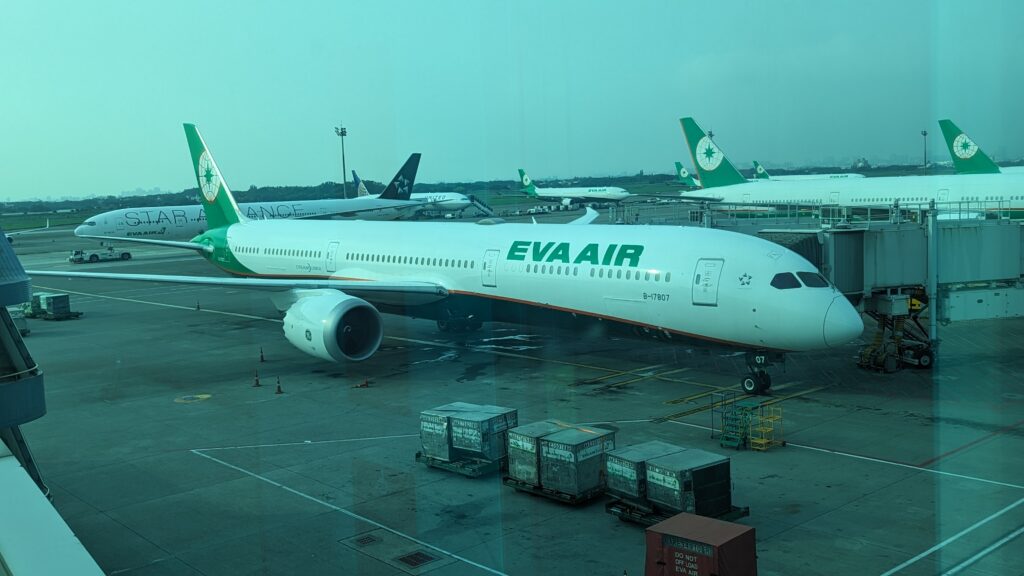
Tokyo – My First Glimpse of Japan’s Enchanting Contrast
After an extended flight and a transfer from Taipei to Tokyo, I finally arrived at my destination. It’s not just any city; it’s a mega-city, the largest in the world at the time of writing. With a population of 38 million people, you could squeeze 19 times the population of Slovenia into this sprawling metropolis. Yet, the astonishing part is how everything functions seamlessly. The city feels like a technological marvel but at the same time, one can find hundreds of temples with rich history all around Tokyo.
Tokyo boasts one of the world’s most efficient public transport systems, consistently ranking among the top three according to numerous websites I’ve checked. From my firsthand experience, I can vouch for its efficiency. Wherever I needed to go, there was almost always a metro line, and if not, a train or bus readily served as an alternative. Public transport also wasn’t expensive – for the most part, taking a metro cost me somewhere in the range of 180 to 300 JPY or roughly 1,1 to 1,9 EUR at the current exchange rate. Trains were also always extremely punctual – the biggest delay (with the exclusion of the Sendai accident that I had and will describe later) was 2 to 3 minutes. In the entire span of my trip! The bullet trains were no exception to this rule – as a matter of fact, none of those trains was ever delayed for me. However, a disclaimer, bullet trains aren’t cheap. You will probably pay around 90 EUR for a one-way ticket from Tokyo to Kyoto if you do not have a JR Pass.
And so my first task after arriving at the Narita airport was to obtain a JR Pass and some cash. I passed through the immigration gates, gave my fingerprint, presented my passport to the staff, passed the customs and finally headed to the exit. Navigating the airport proved to be surprisingly easy, especially not having all the extra luggage was a huge bonus. After having exited the security gates I started looking for an ATM. And then suddenly I got approached by a TV crew. My first thought of course was that they just wanted to ask me or something – I have already thought to myself; time to put my Japanese skills to the test. But alas, I was proven wrong. The report’s assistant asked me in perfect English whether I wanted to give an interview. And of course, I said yes – first thing when I came to Japan and I was already getting interviewed about my trip – what more could I wish for.
The reporter himself didn’t speak much English, so his assistant served as a translator during our conversation. The show they were recording was called ‘Why did you come to Japan?’—the very question they posed to me. But, in reality, there was no simple answer. It was almost every aspect of Japan that drew me here—the culture, the people, the incredible cuisine, the stunning natural beauty, the remarkable trains, the world of pop culture and anime, the temples and the allure of the samurai, and so much more.
In response, I provided the most generic answer possible, feeling the need to craft a more thoughtful response the next time. Yet, the interview itself heightened my excitement about the trip. It encouraged me to contemplate all the experiences and adventures awaiting me, from the delicious food I was going to savour to the thrilling train trips I was eager to embark on. This marked the beginning of my journey through Japan, inspired by insights from my favourite travel source: Abroad in Japan.
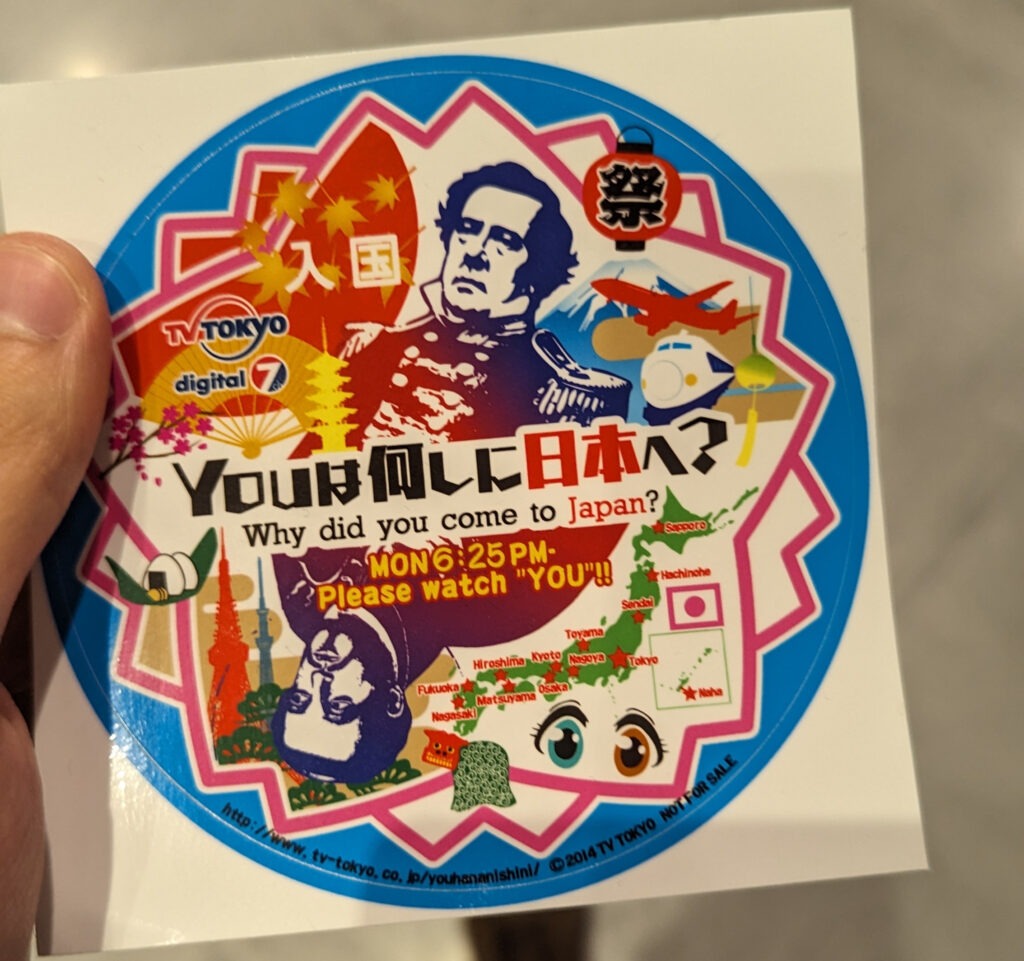
Taking the Narita Express
After the interview, I made my way to find an ATM. In Japanese, I asked the TV crew if they knew where I could find one, and to my surprise, the reporter replied with a compliment: 日本語は上手 (Nihongo wa jouzu). With my limited knowledge of Japanese, it was clear to me that he was saying my Japanese was good! They kindly pointed me in the direction of the nearest ATM to get some money.
The ATM I used was from a 7/11 convenience store. 7/11 is a Japanese convenience store chain found almost everywhere. True to their name, these stores are open between 11 p.m. and 7 a.m. It turned out that using a 7/11 ATM was both highly convenient and cost-effective. For every 50,000 JPY I withdrew, I was only sometimes charged 1,000 JPY. Overall, I paid about 2% for both currency conversion and money withdrawal, which was quite reasonable. For the readers’ information, you can also withdraw money at many other convenience store chains such as Lawson and Family Mart. However, be cautious with using other ATMs, as they may come with higher withdrawal fees.
And then came the JR Pass. I had to pick it up at the nearest JR Office, and luckily, there was one conveniently located at the airport. I also purchased a Narita Express ticket, all set for the next leg of my journey. However, I soon encountered an unexpected obstacle. Buying a Suica card was not as straightforward as I’d hoped! ‘Why is that?’ I thought to myself. Suica is an essential contactless travel card used extensively for subway and train rides in Japan and much more. Without it, navigating the city and using public transportation might prove a bit more inconvenient. It turns out that they were not being sold anymore due to a semiconductor shortage.
Thus, with a train ticket in hand, I hastened to catch my train—the famous Narita Express. Finding the train was a breeze, thanks to the excellent signage throughout the airport. Navigating my way through the airport turned out to be quite straightforward. However, upon reaching the platform, I found myself a bit perplexed by the ticket information and decided to seek assistance. Conveniently, there was staff at nearly every train station I encountered in Japan, including this one. Most of the staff also had some level of English proficiency. Nevertheless, with my desire to enhance my language skills, I resolved to use English only when absolutely necessary. This approach allowed me to practice and improve my Japanese as much as possible. With a ticket firmly in my hand, I approached the policeman and asked, ‘この電車は東京に行きますか?’ (Kono dennsha wa toukyou ni ikimasuka), which translates to ‘Does this train go to Tokyo?’. He kindly pointed toward my carriage and showed me my seat. Satisfied with the result I took my seat and prepared myself to head toward my first destination – the metropolis of Tokyo.

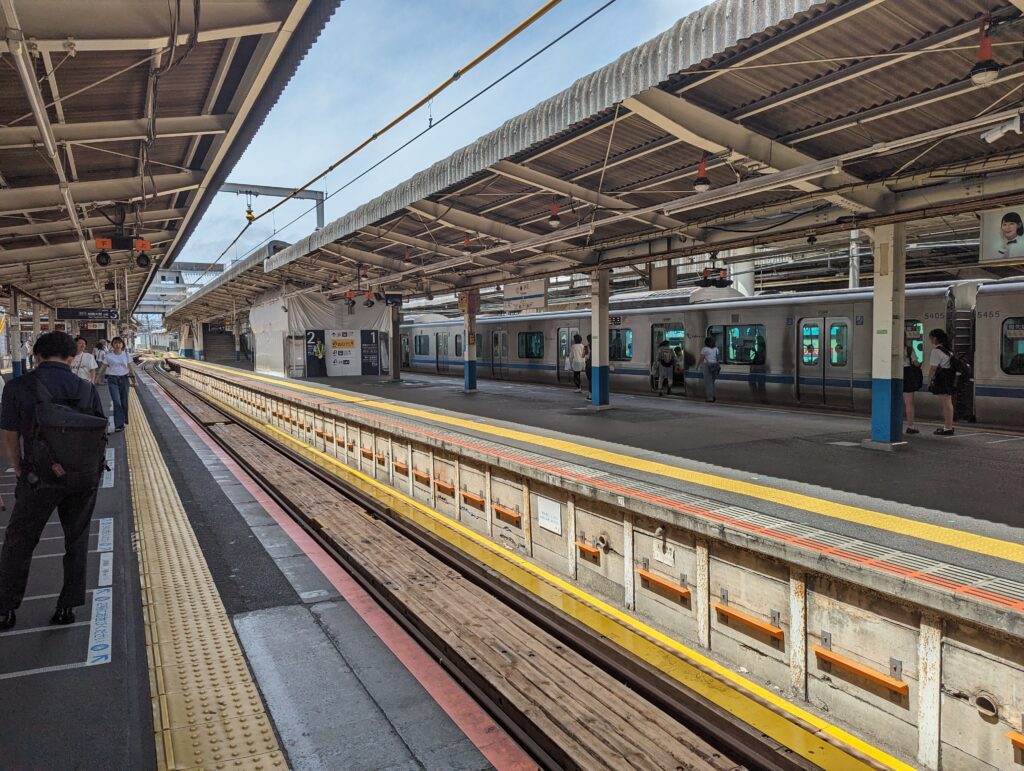
A not-so-good start in Tokyo
The train seats were exceptionally comfortable, and the carriage was remarkably quiet—a concept somewhat foreign to me in Slovenia. I gazed out of the window, relishing the fact that I was finally abroad. As I observed nature passing by, I couldn’t help but notice several differences in the vegetation compared to my home country. Everything seemed more vibrant and green even though Slovenia is a country with one of the highest forest coverage. This makes perfect sense considering that almost 70% of Japan is blanketed by lush forests. Its geography, characterized by extensive mountain ranges, makes it an ideal place for hiking and adventure seekers. The narrow roads winding through rice fields felt more like bicycle lanes than traditional thoroughfares. Everything felt refreshingly different. Cars drove on the left side of the road, people spoke a different language, and intriguing symbols adorned signs and buildings—how fortunate I was to have studied them, even if just a little bit!
My destination was the Ochia-minami-nagasaki station, but to reach it, I had to use the subway in addition to the Narita Express. While this wasn’t my first time using the subway, I knew that finding my way around could be simplified with modern technology. So, I opened Google Maps, typed in my destination, and followed the directions it provided. The navigation led me to the Shinjuku metro station, where I would catch the Oedo line. Buying metro tickets, on the other hand, presented a somewhat different experience. For a newcomer, it might even seem like a daunting and confusing task. But fear not, it’s relatively straightforward. At every station, you’ll find a map displaying the various routes and stations. My first task was to locate the starting station, typically encircled with a red circle. Following that, I simply had to find my destination station, and this indicated the type of ticket I needed to purchase—usually, the farther you travelled, the more expensive the ticket. Each station also had a number next to it, making subway navigation relatively simple. However, I must admit, I did get a little lost a time or two and ended up purchasing the wrong ticket three times. The main source of confusion was the mix of different metro systems. Often, two different stations were situated right next to each other, and I accidentally entered the wrong one!
But after all, I did reach my destination. The station of Ochiai-minami-nagasaki. I exited the train after hearing my train station announced and headed for the exit. I then headed for my apartment where I was about to spend the next week. It was a homestay apartment, which meant, I was staying at a local family’s house. Such an accommodation has its benefits and its negatives. The most obvious benefit was of course meeting the locals. The host family did not speak a lot of English, so I was forced to use Japanese all the time – it was a good way to improve my spoken Japanese. But I also had a couple of cringe-worthy moments, like presenting myself to the hosts Sato and Kana. However, Kana was very helpful, I also got to try the art of Shodo and had a washing machine available at any time. One of the downsides was a bit of a lack of privacy – my room had a paper-thin door separating my and my neighbour’s room, which meant I could literally hear everything. The breathing, the snoring, everything. Luckily though, my neighbor was very quiet so I could sleep well in that regard. The neighbour was a Russian girl, that spoke really good Japanese. She was way beyond my level! However, I did not sleep well for the first few days. I got a cold because of the humid weather and the ever-present AC units. It was also really hot during the night. I wanted to have the window open, but since I was worried my neighbour would not be able to sleep because of the outside noise, I usually kept the window closed. The house was otherwise also really nice, however, everything felt a bit cramped. I would say it was a classic Tokyo-style apartment – small and packed!
And so I spent a couple of days at home and exploring the surroundings. The local parks were really nice and the local restaurants as well. I loved sitting down at a local restaurant, which had no English menu, and often eyeballed the meaning of the dishes, To be fair, the first time I just ordered some kind of soup, rice, and then a dish, whose name I could not read. It turned out to be delicious and I did not regret playing the dice! I never felt the “racism” that many people have expressed about Japan. At least not when by myself, though I might be a little biased in this regard since Japan is the destination of my dreams after all.
Going on the trains with a runny nose also posed a great challenge! I even read about it before boarding the train and figured out that blowing your nose on the train was considered inappropriate. As such I always kept a handkerchief in my hand and wiped my nose every few minutes. It worked and I didn’t get any stares! Japan felt a bit different in this regard, but I did not mind it at all. There was one thing that I noticed on the trains though. Though this only happened once or twice, there was a chance, that if I took the seat on the train, people would avoid sitting next to me or other foreigners. Though most of the time, this was not the case.
David does not dream of going to Enoshima
My first venture outside of Tokyo led me to Enoshima, a destination with particular significance if you’re familiar with anime and/or manga. The title plays off ‘Rascal Does Not Dream of Bunny Girl Senpai,’ a Japanese light novel series in which Enoshima is featured as one of the locations in the novel. It is where the main characters Sakuta and Koga go on a date due to the peculiar nature of the Adolescence Syndrome, a phenomenon that causes supernatural occurrences related to the psychological struggles of individuals. In Koga’s case, it was a time loop affecting her – she kept repeating the same day. Sakuta, who sought to help her break from the time loop, went on a date to Enoshima with her to resolve her struggles.
Following in the footsteps of Sakuta and Koga, I decided to embrace the same Enoshima experience, immersing myself in nature with the soothing sounds of the waves and the vibrant crowds making their way to the island. Positioned just before the bridge to the island, the aquarium marked a notable starting point. This visit marked my inaugural experience at a proper aquarium, and it proved to be nothing short of impressive. The diverse array of fish and marine life on display showcased a rich palette of underwater wonders, making the visit a captivating and memorable one. There were all kinds of fish – the pufferfish, the eel, the stingray, the sardines, the brightly coloured coral fish and so much more! There were dolphins, intriguing deepsea creatures and very funny-looking fish!
The little trip to the aquarium made me very hungry! So I started looking for a nearby restaurant. What I had in mind was ramen or something along those lines. So I brought up Google Maps and like usually selected the nearby region, set the filter to Open now and Top rated and a local restaurant popped up. It was called ひで吉食堂 (Hideyoshi Dining Hall). I decided to follow my instinct and ask for a recommendation by saying おすすめはなんですか. And well, was the food a surprise! I got a bowl of… wait, this looks, interesting. It looked like a bowl of worms, very unappetizing. But the looks certainly deceived! It was a rice bowl covered with little fish – a local speciality and the fish were captured daily. The fish are called Shirasu, which is a Japanese term used for small white fish. Along with that, I was served a miso soup (that also included those little fish). Tofu and nori (dried algae) were almost always added to the miso soup. There were also some side dishes – a cup of black-coloured algae and Japanese pickled cucumbers. The latter tasted much different than the ones I eat at home or the American ones. They had an almost weird taste that I became accustomed to over time. The rice bowl also had an egg on top of it. I have to admit, the main dish did not look appetizing at all and I had a hard time getting started with it. First I poked the egg and let it cover the rice and then I dug in. The dish surprised me with its distinct flavour, one that I had not tried before. Though I am not a big fan of seafood, the dish was exceptional. The egg added an excellent taste to the dish and complemented the meaty taste of the fish. The miso soup was also great and the side dishes added a bit of saltines to the rice. It was a 9/10 dish for me since I am not a huge fan of seafood – but I love to try new food even if I don’t like it. You only live once is my motto and thus I have to try something new every time.

After that, I headed to what I thought was the highlight of the day: the Enoshima island. The path led me to a long bridge that connected the island and the mainland of Tokyo. Entering the island I felt like the protagonist of my own story. First, the green tori gate that marked the entrance of the small village of Enoshima – the same one that I read about. The gate had visible marks that indicated its history spanned many years ago. They were first made of wood, but later rebuilt from copper in 1821. Stepping through the gate gave me a feeling of entering another world. I then passed through the narrow alley bustling with various shops and food stalls selling different kinds of Japanese delicacies. One of the popular items was the Tako senbei – something I regret not buying. As its name suggests, it is a cracker made out of octopus. It’s a really interesting snack that you likely won’t come across elsewhere around the world. Other dishes and snacks included but were not limited to, seafood skewers, ice-cream monakas (something similar to an ice-cream sandwich), and much more. I didn’t try any of it, since I was still full after eating the delicious lunch.
The main path then led me to the top of the hill, where I came across my first shrine – the Enoshima shrine. I was not fully familiar with the Japanese customs regarding prayers, shrines and temples, so out of respect, I opted not to roam around the entrance of the temple for too long. There were many people, which made me guess, there might be some kind of a festival/holiday going on – after looking it up on the internet, it seems this was the last day of Enoshima’s summer feature “Enoshima Lantern”. This was supposed to give the island a magical atmosphere in the evening. Sadly I was visiting during the day, so I did not get to fully experience this ambient. On the other hand, the greenery and the shrines combined with the desire to seek the places that I saw in the anime made Enoshima one of my favourite experiences. The shrines and surroundings were beautifully decorated – beautiful pink flower trees (no, sadly they were not cherry blossoms), red banners all around marking the event and cheerful people saying their prayers. I immersed myself in the atmosphere and continued to follow the path.
On my way to the rest of the island, I saw many small wooden plaques. These are called ema (絵馬), and they are a part of the Japanese Shinto and Buddhist religions. People use them to write down their wishes and prayers, hoping they will come true. The wooden plaques are then left hanging up at the shrine. The emas can be bought at any shrine, and there are usually little shops at every shrine where you can buy them, as well as lucky charms and other religious items. I did not buy any of these, though I did buy some lucky charms and an omikuji in Izumo. An omikuji is basically a small paper strip with random fortunes, ranging from success in marriage, studies, health and money. Thus, I moved forward until I reached the top of the hill. There was a lush garden, a cafe, and a gift shop, as well as an observation tower. I decided to relax a little bit and took a stroll around the garden, observing the surroundings and looking for any familiarities between the mentioned anime and the actual surroundings. It did not take me long to reach one of the spots presented in the first picture below. There were also banners everywhere, indicating the presence of this heartwarming anime all across the island. The path then took me past a very old house, which seemed to be a big attraction on the island. And on my way to the other side, I started noticing a common trend. The island was full of younger people, mainly couples. Seems like it was a popular spot for couples to go on a date, drawing yet another parallel to Sakuta and Koga’s date. Lush vegetation, the sound of the waves, the shade of the trees, and a bit of seclusion – it really was a perfect spot for dating. I took in the atmosphere and headed towards my final destination on the island – the Enoshima Iwaya cave. The cave offered a very interesting experience. All the visitors were given a little candle on a stick. It served as a way to illuminate the path through the cave but was mostly a part of the experience. The cave was nothing in comparison to some of the caves I have been to in Slovenia, but it had a twist. At the end of it, there was a scary dragon illuminated with blue light. And once you approached it, it let out a loud roar. There is a whole story behind this dragon and the island and what part the dragon played in its creation. Supposedly, the dragon used to wreak havoc on the nearby villagers until the goddess Benzaiten descended upon earth and erected the island. After that, the dragon fell in love with the goddess and, as a result, ceased to cause any harm to the villagers. This tale is likely a metaphor, where the dragon represents the sea and the destructive waves. I found the tale very interesting and headed out with a smile on my face, looking forward to the last part of that day’s journey.
And thus I boarded the Enoden line train from Enoshima to Shichirigahama station. It was a short ride along the sea. Arriving at the Shichirigahama station, I immediately recognised the train station. It is one of the most famous spots of this anime, along with the nearby Shichirigahama beach and the high school. The high school’s presence was immediately clear to me with many students rushing to the train station even at this time in the evening. Another interesting thing was, that this was the only station in Tokyo, where there was no ticket machine or a ticket counter. It was based entirely on trust. I followed the road towards the beach and on my way saw the mentioned high school. It was already dark, so I had to be careful when taking pictures across the road. The moon was shining brightly though, which made for an excellent time to go to the beach. Approaching the staircase that led down to the shore I heard laughter and cheerful people. I did not know what to expect but I came across a bunch of high-schoolers having fireworks and playing on the shore, dipping their toes in the sea. I crossed the little bridge and sat myself on a tree trunk. After that, I just enjoyed the evening atmosphere, the glow of the full moon and the beautiful view of Enoshima, while thinking about how awesome that day’s trip was. And so, the day had ended. My favourite day in Tokyo.
Here are just some of the places from the anime, that I managed to find. Sadly it was already nighttime when I arrived at Shichirigahama. However, it felt sort of surreal, to be in the same spot where all this stuff that I have read about has happened, even though it was just fictional.
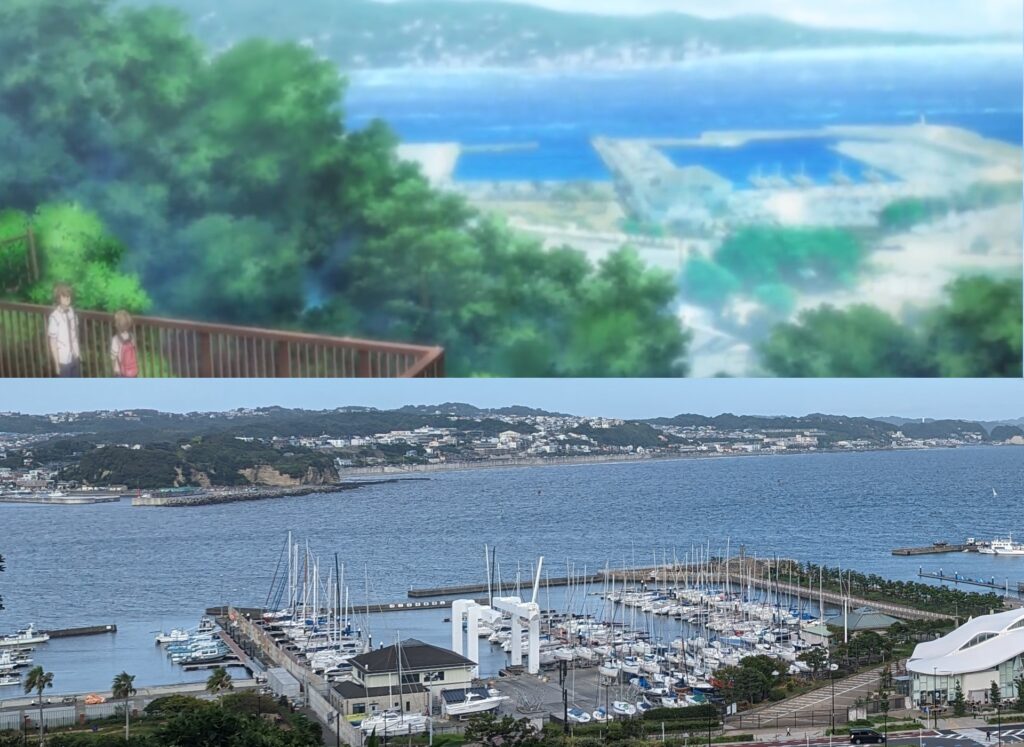
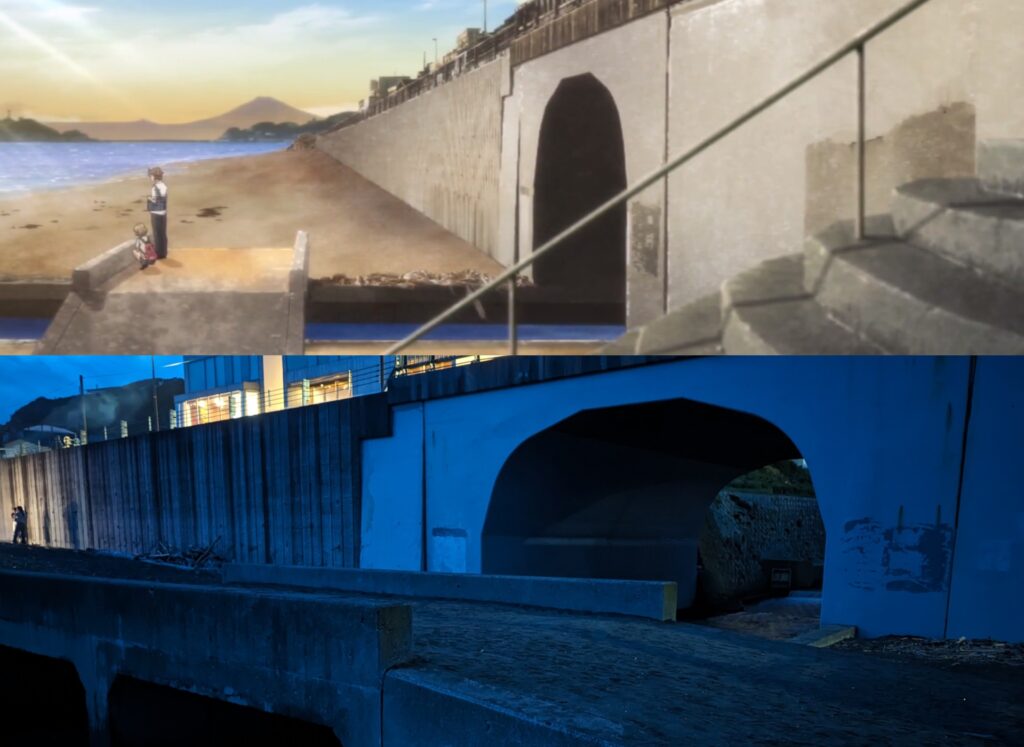
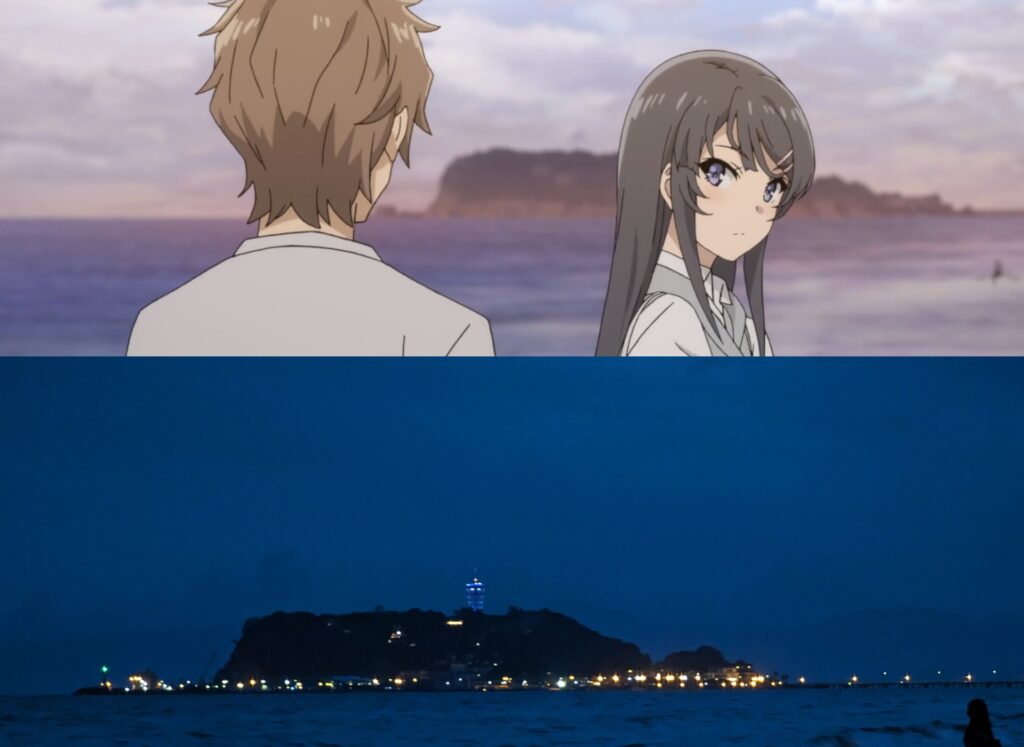

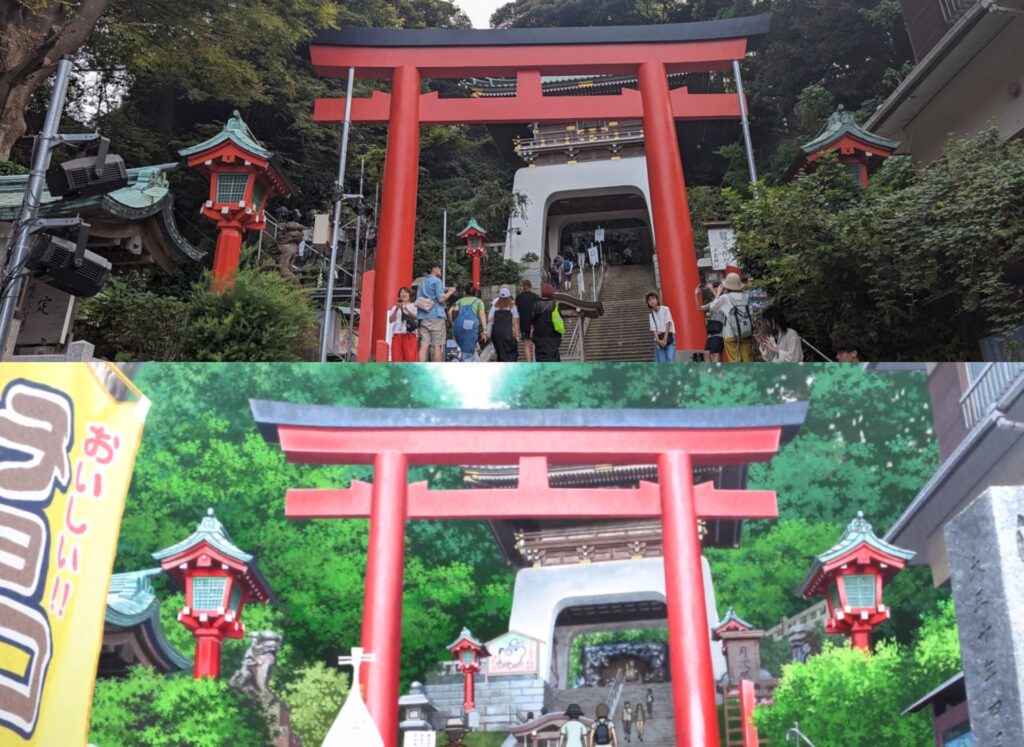
*The image of the Enoshima shrine is not mine, since I unfortunately did not get a photo of it. Source: Kanagawa Prefecture Tourism Site. The comparison images were taken directly from the anime.
A little hike around my neighbourhood
Having a cold led me to explore my surroundings more than I would have expected. While the centre of Tokyo did not blow me away with its fairly mundane buildings in terms of architecture and culture, its surroundings were another story. Having spent my first week in the outer region of Tokyo (I lived near the Ochia-Minami-Nagasaki station), I got to explore both the centre of Tokyo and its surroundings. The lack of tall buildings made living in my neighbourhood feel much nicer. The houses were relatively small, the neighborhood was quiet and my apartment was in front of a school so I got to see the crowds of children marching towards the school in their uniforms every morning. They all seemed cheerful and seemed to be used to the sight of a foreigner. My neighbourhood and most of Tokyo were also exceptionally clean – the same goes for the subway. It was the cleanest of the big cities that I have visited so far (cities like London, Paris, Ljubljana, Amsterdam, Vienna, etc.). The neighbourhood was also very quiet and the only thing that I could hear in the morning was the garbage truck and occasionally a passing motorbike. The gardens, though fairly rare, were also taken care of. However, there was one thing that really stood out: garbage bags at the front of every house. In most cities, garbage is usually collected in large garbage bins that are shared across various houses. Those garbage bins are then regularly emptied by the local garbage collection authority. But here in Tokyo (and from my experience in Japan in general), the trash was left at the front of the door and collected that way. There were also no garbage bins in general and one could only find them at a train station or alike. And yet with all this in mind, the city was really clean – there was no garbage on the side of the road, in the parks, nowhere to be found. I suppose this stems from their belief in the Shinto religion which emphasises cleanliness and order.
The fairly common parks were one of my favourite places in Tokyo. There was also one near my residence so I decided to visit it to relieve myself a little bit having caught a cold. I got myself lunch and some sweets and headed for the park. On my way, I passed a garbage collection company and learned, that in Tokyo the garbage was not recycled, but rather burned. “Well, this really is not good for the environment”, I thought to myself. This was yet another of those contrasts – the country is super clean and yet is the third biggest producer of plastic waste in the world. Having passed the garbage collection company, I soon arrived at the park. I took notice of the information board which stated that the park was closed during the night. I then continued to the center of the park passing many elderly who enjoyed their time in the park. I sat on a little bench and made a call home to say hello to my family.

The city of neon lights and pop-culture
Having thoroughly explored my neighbourhood and my health being in a much better condition, I decided to venture to another part of Tokyo – Akihabara. It’s one of those parts of the city that one just cannot ignore. It’s the centre of pop culture, anime, manga, maid cafes, and technology. Filled with hundreds of different shops almost anyone can find something for themselves – be it a unique experience in a maid cafe, a shop filled with DIY materials, bookshops, vending machines, prize games and so much more! My adventure in Akihabara began in probably the largest anime-related store that I have ever been to. Anything else pales in comparison to the variety of products offered here. 7 stories of everything an anime fan would desire. I had to keep a close watch on my wallet to not overspend here, but I did not leave empty-handed. I bought two art books and some other merchandise that piqued my interest.
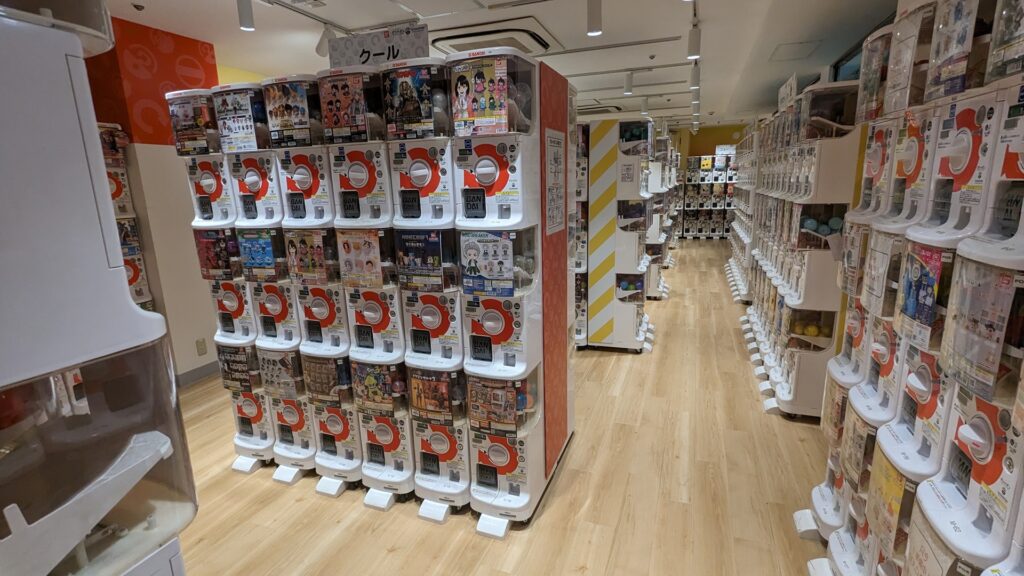

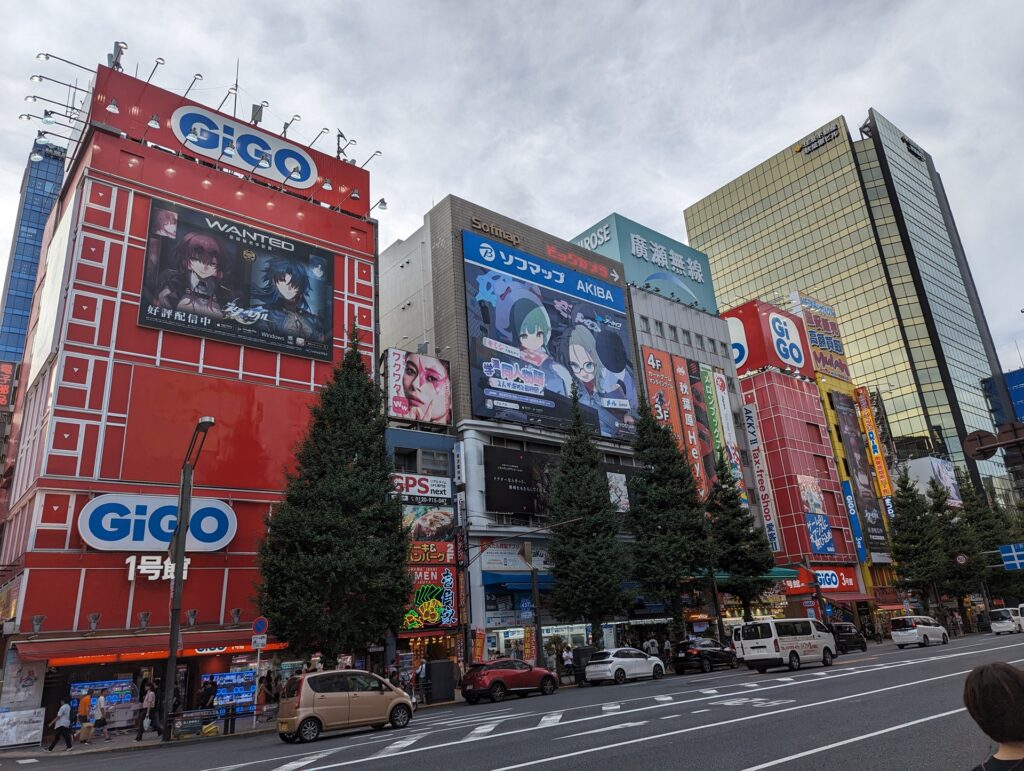
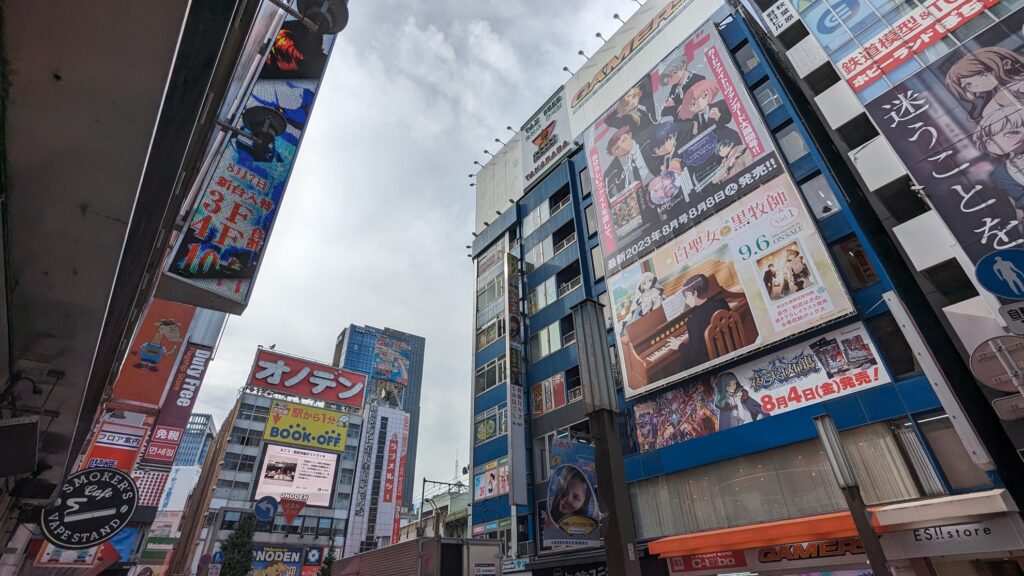
After doing some shopping I decided to visit a maid cafe. I was not sure about going there at first since this was an activity even I considered unusual, but in the end, I told myself that I had to go if I was there. Well, I was not disappointed in my choice! Finding the maid cafe was not so easy. First I had to locate the building where the cafe was located. I entered the building and immediately I was surrounded by the sound of gacha machines. For those unfamiliar with this word, it basically means a video game that implements the gacha (toy vending machine) mechanic, to cite Wikipedia. I had no intention of trying any of them since the luck was usually not on my side with such games. And so I headed up another two stories until I reached an elevator. The elevator had a sign pointing any travellers to their destination: the maid cafe. In front of the elevator, there was also a maid, which confirmed that I was headed in the right direction. I greeted the maid and in a maidly fashion, she let her master enter the elevator first. Now, I know this sentence might sound really weird to a person unfamiliar with the concept of a maid cafe. To explain it briefly, it is all a game of pretend. In a maid cafe, all the guests are referred to as a master or if you are a female a princess. The maids then play the role of a, you guessed it, a maid. They serve you like you are the centre of attention and make sure you feel at home. Though, a warning to the general demographic of people – most people will find this experience very unusual. However, this did not stop me from going forward. I reached the cafe and the experience began as soon as I entered the cafe. I received some sort of a card and when I entered the place one of the maids rang a bell. She shouted in a high-pitched voice to get other maids’ attention and then announced the arrival of a new master. All the maids turned their attention towards me and greeted me with the classic greeting of おかえりなさいご主人様 お嬢様, which basically means “Welcome home master, princess!”.
After that, I was seated by one of the maids who introduced herself as Teddy. Turns out the cafe was animal-themed and each of the maids had some sort of animal ear and a personality to match the outfit. Teddy introduced herself and told me something about herself. After that, she pointed at the QR code that brought up a menu on my phone. This was one of the ways of ordering food in Tokyo – by using unique QR codes that corresponded to the table that you were sitting at. The menu had a large variety of food, beverages and services. I decided to go all in and chose the full menu, which included the main course, a dessert, a drink of my choice and a picture with the maid – yes, even taking a picture with the maid cost money – that was the whole point of this place. There were not many visitors – it was just me, another pair on my right and another solo traveller on the other side of the room. The couple next to me seemed to be experiencing this for the first time as well. They were also foreigners and judging by their speech they were probably Spanish. They too ordered some food and a drink. I observed them as they received the famous omurice*. I too ordered this famous dish. What made this dish special was not the dish itself – to be fair, the dish was not really the peak of Japanese cuisine. It was just rice with porridge and ketchup covered in an omelette. First, I received my drink. I ordered a lemon soda. The drink had a bright green colour and actually tasted really good. The drink was brought to me by one of the other maids, but sadly I did not remember their names. She gave me the drink and then came the part that made the maid cafes stand out among other similar establishments. She told me she would cast a spell on the drink and I was supposed to end the chant. It went something along the lines of 美味しくね 萌え萌えきゅん and sometimes it was just 萌え萌えきゅん. It translated to something like: “Delicious, isn’t it? Heart-fluttering moe”. It suggests a delightful and charming experience that makes your heart pound with affection or excitement. If you are wondering how this is supposed to look like, here is a video demonstrating just this by the maid cafe that I personally went to 【メイド】みしな / 萌え萌えきゅん♡.
After that, we had a little chatter about things like where I came from, what my name was and much more. I enjoyed my drink while waiting for the main course to arrive. And I did not have to wait for very long. The omurice arrived soon. And yet again it was time for a ma magical spell. But before that, I got to choose what animal would be drawn on my omurice with the tube of ketchup by another one of the maids. Being a simple man, I chose a cat, since it is my favourite animal after all. And the maid went to work. Starting with the ears she traced the shape of two triangles and then the shape of the face. Following that the the eyes and a smiling mouth were added. After that, a bunch of hearts were on the side and the dish was complete. And for the final part, a magical chant that made the food taste even better! Unfortunately for me, I failed my part of the chant every single time haha. I dug in. The omurice tasted pretty good but it palled in comparison to other food that I ate in Japan. This held true for most of the themed cafes that I went to. You went there for the experience and not the food. Still, I was very much enjoying the experience of a maid cafe – a place where one could forget about the worries of the everyday. Having finished the meal I was approached by one of the maids. Since my Japanese was not top-notch, the maid used a translator app to ask me a question: whether I wanted to pay extra for a live performance. I did not hold back and immediately accepted the offer. A minute later Teddy came back with a list of songs that she could sing. There were many, most of which I did not know at all. Except for one, my favourite song at that time: アイドル (Idol) by YOASOBI. It was also the opening song of my favourite animes. The song was really popular both in Japan and outside Japan raking up an astonishing amount of views on YouTube (365M views at the time of writing). To get a better view of the performance I was seated near the stage and soon after that received a dessert. Along with that, I received a penlight that I would use to cheer the singer on. I was also offered to participate in a gacha game. And guess what, I said yes to that as well – it was not a smart financial decision, but I decided to go full-in since I was here. The maid brought a big box full of different prize tickets. I extended my hand to grab a random ticket and the maid played one of those gacha sounds that you hear when do a pull on a gacha machine. The anticipation was big, the stakes were high and the reward I received was… A pair of animal ears! Cat ones! What a coincidence! I was happy with the reward and felt the gacha was on my side this time around.

The omurice also had a picture of a cat and a bunch of hearts drawn on it with the ketchup by one of the maids. The dich certainly looks very basic, but the magical spell cast by the maid made it taste ten times better! In the background, you can also see the envelope that I received, which would contain the photo that I was going to take at the end. On the right, there was also a jar filled with little papers that basically counted as a tip – something that you do not see anywhere else in Japan since tipping culture is not a thing here. I, unfortunately, do not have many photos of this place due to their policy of not taking pictures of the maids. So as an alternative, I will link the place that I went to here and you are welcome to check it out: Heaven’s Gate.
After that, it was time for the performance. The lights dimmed, and another maid told me to break a glowstick in half to make it glow green. I put on the cat ears they gave me and just went with it, even though it felt a bit strange. The music started, and my heart started racing. Some songs can really get to me, and this was one of them. The stage lit up, and the performer came out. We made eye contact, and she smiled before starting to sing. I wasn’t expecting much, but she was actually really good – her voice matched the song perfectly, lively and cheerful. Her dance moves fit the song so well, it was like watching a real idol perform. I cheered along with everyone else, waving my glowstick. It felt like Aqua cheering cheering the newly founded B-Komachi band on stage. When the performance ended, I couldn’t help but clap and cheer.
The stage performance was honestly one of my favourite experiences in Tokyo, one that I am looking forward to again in the future. Perhaps this time on the big stage – at a proper idol concert. I was looking for one this time around already, but I couldn’t find anything. Perhaps a small idol group band – something like the one I read about in my favourite light novel: Nodoka’s band, Sweet Bullet. I will have to dig deeper next time around. Or perhaps a YOASOBI, Hyde or a Hololive concert. But now, back to the maid cafe. After the stellar performance, I finished the dessert and then it was time for me to take a picture with one of the chosen maids. Naturally, I chose Teddy. First of all, because it was the only name I (due to confusion, barely) remembered, and second of all she performed amazingly on stage. After all was over, I left the cafe with a smile on my face and with maids waving me goodbye. And then came the moment of the truth: how much did I spend in the cafe. You paid at the entrance where you entered. And the bill was… 9.000 JPY. For those unfamiliar with the currency, that was about 60 EUR at the time of the visit. Quite a costly cafe if you ask me haha. So for those visiting, please, pay attention to your wallet and don’t be like me – saying yes to anything you are offered. Though, to be fair, I did not regret spending a single yen. I think it was worth it. And I will probably visit again someday. Perhaps, just make sure not to spend too much.
The visit to the maid cafe was followed by an exploration of more of Akihabara. I visited all sorts of shops that were a must-visit according to some websites. I went to a couple of gacha places, a couple of manga places, and of course an adult shop. The selection did not disappoint in any of them. However, I made sure not to spend any more money to preserve some funds for another day.
*Omurice (オムライス) – to cite Wikipedia: a famous Japanese dish consisting of an omelette made with fried rice and thin, fried scrambled eggs, usually topped with ketchup.
Trying out the art of Shodo
This was yet a day when was going to rest. I still had a cold, but it was getting much better. I decided to try the art of Shodo (書道). I attended a class by a Shodo teacher, who also happened to be my host. Having used Google Maps on every single turn, I decided to perhaps try and navigate myself without it for once. I followed the path to the main road, a route, which I had taken before. After that I followed the main road for a while and at a certain crossroad I took a left turn to get to my destination. The neighbourhood that I arrived at was, of course, unfamiliar to me. Thus, I sought some help from a nearby local to inquire about the location of the Shodo class. With a nice greeting/excuse me of すみません I approached the woman and asked her about the location of the class. I did not give in yet and decided to ask in Japanese. She pointed me toward the building I was looking for and told me the class was above. Since there was a single staircase, finding the door was not a problem. I opened a large metal entrance gate that led me to a parking lot of a decently sized property. There was a small Mitsubishi and a bunch of shed tools lying in front of the garage. The person living have must have been pretty busy with their garden. Alas, I proceeded forward. I took the stairs and arrived at a wooden door. There was no sign on it -there was no sign of a Shodo class. I confidently knocked on the door and soon after heard the sound of lively children rushing towards the door. This made me surprised since I was expecting a nicely decorated room, a table, and a private lesson – but this was not the case. The door opened and the boy peeked through the door. I greeted him and immediately after he shouted to the teacher – she let him know that I was allowed to enter. I took off my shoes as is customary and was told to wait on the tatami floor in front of a shoji door*. The ruckus of children inside reminded me of the lessons in primary school, where we “patiently” waited in front of a classroom with another class already going on in there. But I did not have to wait for very long. The door opened and I was greeted by the teacher.
The classroom was very small and full of cheerful children! It felt like I just entered a school classroom. There was a big zataku table* and a light-coloured wooden floor. The children were mostly quiet, saying a word here and there. When they finished their task they visited the teacher, who graded their assignments. If they did well they got a chance to play a little gacha and receive a reward – a piece of candy! On the wall right next to the door, there was a big piece of paper with all sorts of kanji – presumably drawn by the students. I was given a blanket and a small table separate from the other students. I sat right in front of the teacher so that she could supervise my work. She seemed to be very busy all the time, dealing with children and their parents who came to pick them up. I figured, that most children participated in these lessons to foster creativity and discipline. I too was about to have my patience and calligraphy skills tested. While it was my first time doing this, it was not my first time doing some kind of art. I used to be great at drawing when I was younger – but the passion for drawing slowly faded away as the years went on and got replaced with a desire to learn everything and anything about the world: it is why I love science, travelling, reading and learning about new cultures. And I think I did pretty well. The two kanji that I chose to draw were water 水・みず and cat 猫・ねこ. The first one was relatively simple since it required only four strokes – or so I thought. When the teacher drew a sample (with the orange colour), the paintbrush travelled really smoothly and the beautiful shape of a kanji was drawn. It was done swiftly with elegance and ease. Confidently, I thought I could do the same. Oh, how wrong I was. I could of course not do it with the same elegance or the speed. But the end result was – at least visually – pretty good to me. However, I encourage the reader, who might be skilled in calligraphy, to rate my attempt at this unique art. The cat kanji was a bit more complicated but as a result of that, I was a lot more satisfied at the end. I did not give up and kept drawing (though I do wonder, if I should call this drawing or writing – something in-between, it’s an art after all). 2 hours passed like nothing and the class was about to close soon. So I packed my stuff and decided to head home.

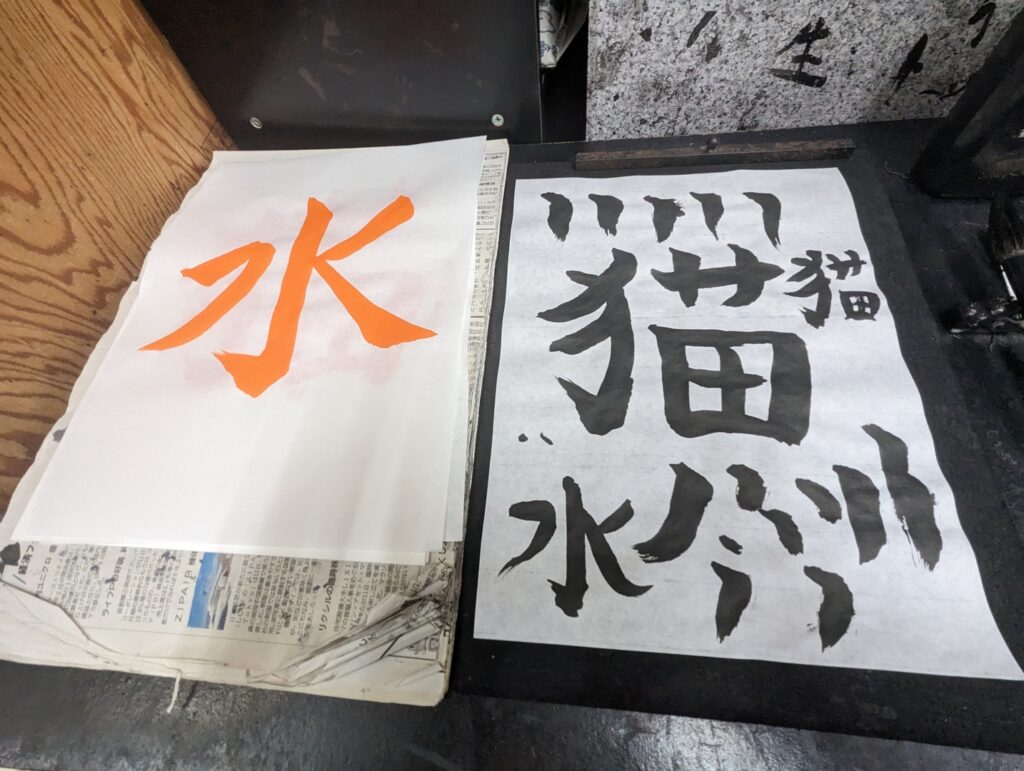
*Shoji door (障子) – to cite Wikipedia: a shoji is a door, window, or room divider used in traditional Japanese architecture, consisting of translucent (or transparent) sheets on a lattice frame.
*Zataku table (座卓) – a Japanese low table.
*Tatami floor – a straw mat covering the floor found all across Japan. You always have to take off your shoes when walking on it. Even if it is just the entrance of a hotel.
Exploring Tokyo’s most dangerous place
This is where the curiosity got the better of me. What led me to this place in the first place was my curiosity about Japan’s more shady side. It is quite contrasting when you compare this to the norms, values and traditions of the Japanese. I am talking about the Red Light District of Tokyo – Kabukicho. Having similar fame to other places like Roppongi, I opted to explore this place at least a little bit.
Finding this place was not really hard. I didn’t even have to use Google Maps for the most part. I took a ride to Shinjuku and after that just headed North, looking for a sign that marked the entrance to the Kabukicho area. And the sign I found! A bright neon sign saying “Kabukicho Sakura-Dori St.” shows the entrance to the Red Light District of Tokyo. And after that an array of various shops and services. Bright neon signs everywhere indicate the presence of parlours, bars, snack bars and much more. A place full of nightlife and unfortunately also full of crime – relative to the other parts of Tokyo of course. Shinjuku and Kabukicho have one of the highest crime rates in Japan. Though recently the crime has decreased significantly. And that made me want to explore this place. And so I went on and soon after got stopped by a Japanese gentleman on the street. This was quite surprising – or maybe it was not, since I have read about this in advance. I didn’t want to get scammed after all and I had read about bad things happening to foreigners in these parts of the city. I more or less knew what was coming my way. But I was curious, so I decided to chat with him a little bit. I advise other travellers NOT to do this. This could potentially get dangerous. First, it was just a bit of small talk – where I am from, why I am here in Japan etc. While talking to him I made sure to never reveal any important personal information, such as the location of my hotel or any other personal details. Seriously, you should never do that when talking to strangers on the street. And then he went straight to the point. The touts, so they are called, offer mainly two kinds of activities. The first one is a girl bar. This is basically a bar where you pay some money to get in, then get the company of a girl or two who chats with you, and at the end, you pay for all the drinks. While most of the bars are safe – especially if you look them up on Google Maps, the ones offered by touts have a high chance of being a scam – a scam that might cost you all your money, dignity or even worse. If you ever intend to go to one of those bars, NEVER follow a tout.
Now, as for the second type of service, I will avoid writing about it in detail, since it is not appropriate for all audiences. If you are curious, google it yourself. He offered a massage. A massage, that has a happy ending. But he described it in detail. That is all I am going to say. I was a bit taken aback since I did not see this one coming so directly haha. Having satisfied my curiosity, I decided to leave this area and proceed back home through the night city, walking all the way instead of taking the train this time. It was a very relaxing evening walk and it let me fall asleep as soon as I came home.
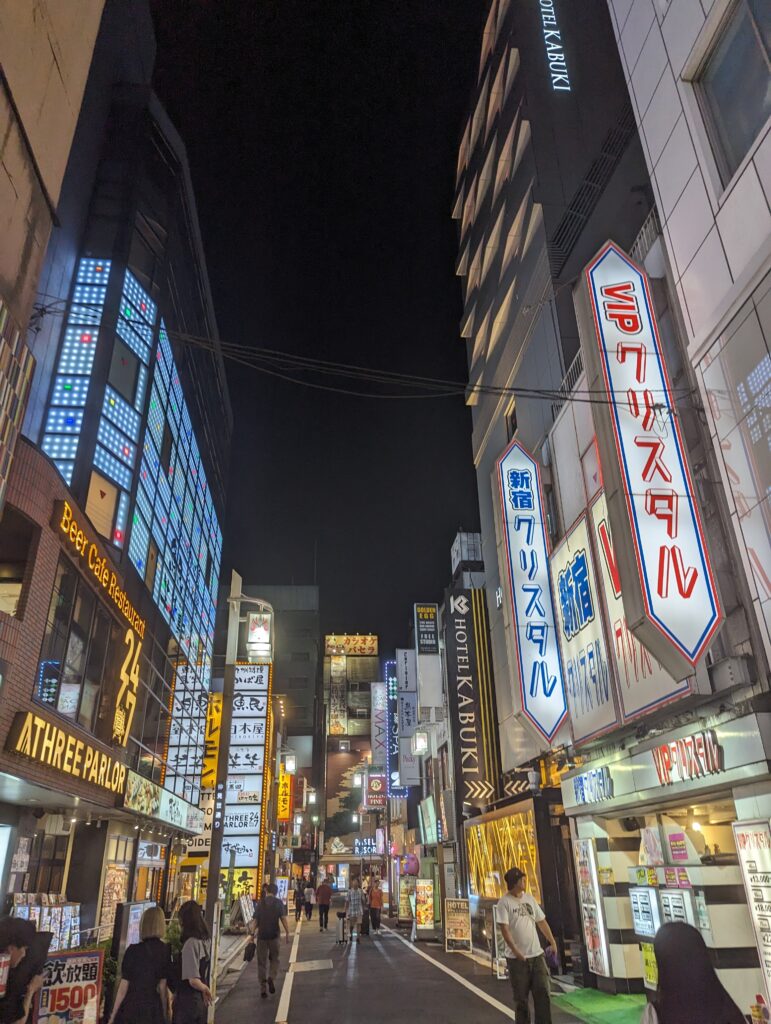
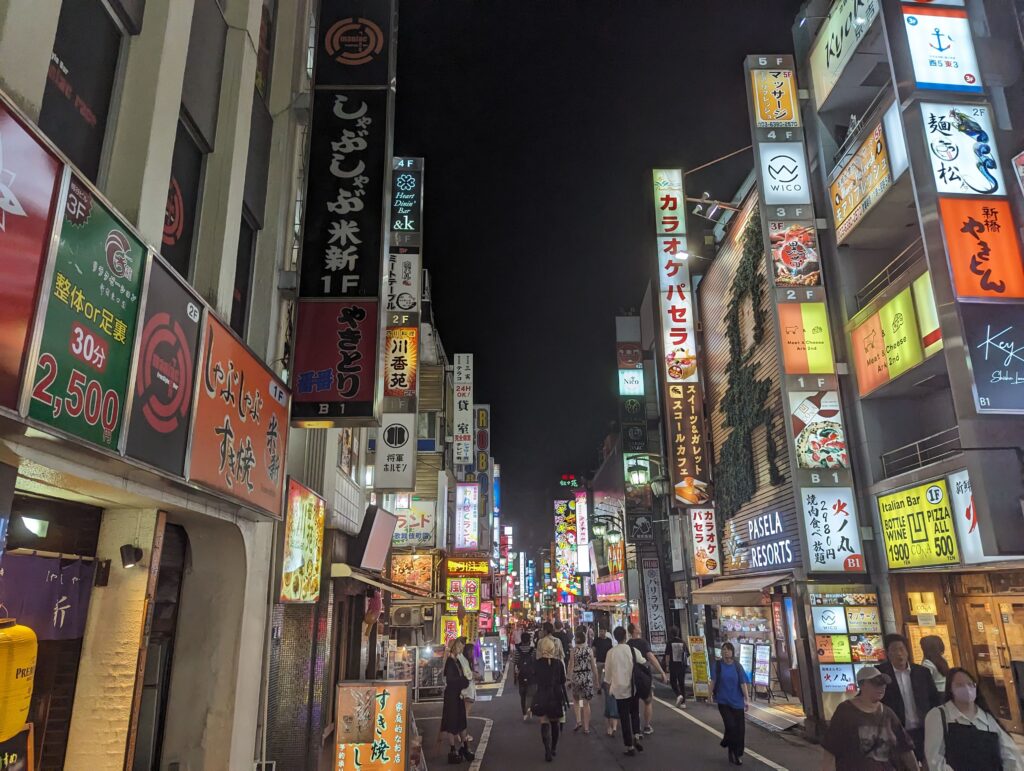
Heavy rain and a capsule hotel – Sendai
My trip did not go without a problem though. After a couple of days in Tokyo, I arrived in Sendai. When I arrived, the weather was already pretty bad, but I decided to visit a local castle. I took a local train and after that walked to the top of the hill where the castle was located. I spent an hour or two at the castle, marvelling at the exhibition. But the weather got even worse as time went on. It started raining more and more and I still had to reach my destination – the city of Ishinomaki. That required me to take another local train ride to the neighbouring city. However, luck was not on my side with this one – all the local trains got cancelled, and I already had a booking reserved in Ishinomaki? What was I going to do? My course of action was the following.
First of all, I checked Google Maps for any alternatives when it came to public transport. And low and behold, there indeed was a highway bus to Ishinomaki and a bus station very close to me. I took the opportunity and immediately rushed towards the bus station. It was around 5 PM and there was a bus about every 30 minutes. I just had to wait for 20 minutes and I would be on my way to Ishinomaki. Or so I thought. The bus did indeed come. But it was full, like, completely. Every single seat, including the middle of the bus, was completely occupied. The bus driver just told us to wait for another bus. And so we did. 30 minutes, and the story repeated itself. The only solution, I thought, would be to head to the main bus station and board the bus there, since at least there would be a line of passengers and I would get a seat eventually. I arrived at the main bus station, and there was probably a 60-meter line. This can’t be the line for my bus I thought, so I asked one of the people in the line if they were waiting for the same bus. Sadly, they replied with a yes. And thus I decided to wait. One bus, two buses, and the line was still at least half as long. At that point, I gave up, since it was almost 8 PM. There was even a TV news station interviewing people in the line. I thought I might end up on camera once again, but alas I did not. I decided to give up on Ishinomaki.


Then, there was the question of whether I should stay in Sendai or head back to Tokyo – I had a JRPass, so heading back wouldn’t cost me anything. I also enjoyed the Shinkansen rides so the idea was still feasible in my mind. However, I also wanted to explore Sendai a little bit more. Thus I decided to stay in Sendai. As a result of that, I cancelled my booking in Ishinomaki since I couldn’t get there. But there was yet another challenge in front of me. When I checked booking for accomodations in Sendai, the first things that popped up were very expensive hotels. I thought, oh, no problem, I will just change the filtering option and sort by lowest price first. I did that and… the same hotel popped up in the first place. Turns out, everything was fully booked in Sendai and only four expensive hotels in Sendai had rooms left. Now that was a big problem! I was not going to pay a two or three days of my budget just to stay at a hotel for a single night. So what choice was I left with? Going to Burger King of course. You might be wondering why the hell did I go to Burger King in Japan out of all places. Well, first of all, it was very late – I am talking about like 8 p.m. And second of all, most places seemed to be closed and I just wanted a quick and cheap bite of food. The nearby Burger King seemed to fit that criteria, so I went to dine there. I ordered a burger and some fries. Sadly I do not remember what kind of a burger I ordered, but it tasted pretty good. With a full stomach, I then set out to find accommodation for myself. Booking not being an option, I decided to just go to a couple of nearby capsule hotels that weren’t listed on Booking, but I found them on Google Maps. This turned out to be a wise decision.
This was my first time at a capsule hotel. It was one of the things on my bucket list. I entered the establishment and the first thing that gave away the nature of the hotel was the tatami mat that began right at the entrance. This of course meant that I had to take my shoes off as soon as I entered the hotel. There was an umbrella rack where you could store your umbrella, but my umbrella unfortunately never fit inside of it. The holder that was used there was always too big to be able to hold my umbrella by its handle. Nonetheless, I picked up my shoes and approached the reception. There were two people at the reception and I first inquired whether they spoke English. One of them did, which I rely appreciated since reserving a hotel room was on the edge of my knowledge of spoken Japanese at that time. Sure I could have done it, but I’d rather see the rules of a capsule hotel explained to me in English for the first time, so I don’t miss anything important. Following the rules and respecting the norms of the local people got you almost anywhere in Japan from my experience. It’s why I never faced any sort of discrimination during my travel alone, it helped a lot. I just didn’t stand out so much I think. In any case, the receptionist explained everything to me very nicely, I locked my shoes in a locker room and with a hotel bracelet headed towards the top floor where the capsules were. The hotel was also very cheap: a mere 25€ a night. What a bargain I thought! The low price also set my expectations very low, but I was about to be proven wrong. This is the place on Google Maps: 駅前人工温泉 とぽす 仙台駅西口.
It seemed that the establishment mostly hosted Japanese. This of course made sense, since the establishment was not listed anywhere except on Google Maps. I was actually quite glad this was the case because I got to at least partially experience what the life of Japanese people was like. When I arrived on my floor I entered a small hall with a long table on the side. There were also a couple of chairs, a TV that was playing Japanese wrestling – something I intended to see myself as a live performance at first, and a very big bookcase filled with various manga. The titles included but were not limited to Demon Slayer, My Dress-up Darling, Seraph of the End, and Oshi no Ko… It was a shared place meant for hanging out, reading manga or just doing your thing on the phone. The room was also connected to a small room filled with sinks and toiletries. And not to forget, like usual, there were different vending machines: one for alcohol, one for other drinks, and another one for cup noodles. So even if you forgot to grab a snack before coming here, you had something to eat. The food and drinks also weren’t that expensive, though the prices seemed to be a bit higher than usual. In the common room, everyone was quiet, nobody was talking loudly on their phone or chatting so loud everyone could hear them. I really appreciated such an atmosphere so that I could wind down after a long day of waiting for a bus that never really arrived… After taking in the atmosphere I entered the sleeping dorm. And wow. I was amazed by it! It felt so much different than your average hostel. The room was dimmed from the get-go – there were no bright lights, no windows, or anything like that. Anyone could go to sleep at any hour they desired. The capsules were also very stylish, both from the outside and the inside. The capsules were ordered in two stories and the upper deck was shifted by half a capsule so that the stairs to them could be put in the middle of the bottom two capsules. The stairs were lit with a warm light that let you use them even at night. As for the capsules themselves, they had a futon instead of the usual bedding that we find in Western-style accommodations. This meant that the bed was not as soft, however, I still found the futon to be very comfortable. The back of the room was also fitted with a comfortable backrest. But the room tour does not end here. The room was also outfitted with a TV, a table, and a reading light. The capsule’s entrance could be sealed with a sliding screen that prevented other people from seeing inside. The curtain also provided some protection against noise. There was merely one thing that I would have changed. The backlight behind the backrest was only dimmable and could not be turned off. While I personally did not mind the dimmed light that shone from the wall and could easily fall asleep, I can imagine that some other people would mind it. Now, I guess there was probably some way to turn it off, but the only thing I could find was the dimming wheel, which I used to dim the light.


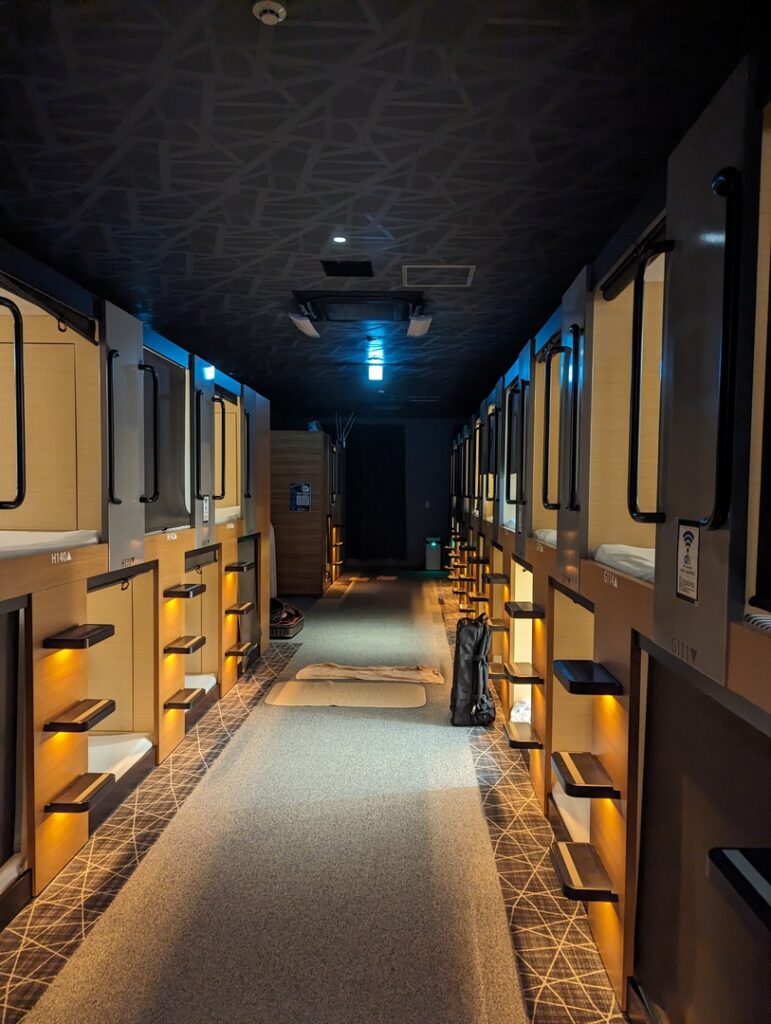
It was already 9 PM. I decided to take a shower. I was told the showers were on the upper floor. Being in a capsule hotel for the first time, I decided to first check out the showers. I was expecting a room full of individual showers, but this was not the case. I arrived at the top floor and entered a small hallway. In front of me was a large curtain that had the kanji for a man (男) on it. This was a dead giveaway that this was an onsen*. At first, this made me a little bit uncomfortable. Why? Well, for those unfamiliar with the concept of an onsen, the thing with it is that when in an onsen, you are not allowed to wear any clothes. I mean nothing, no underwear no swimming trunks. We Westerners are not used to this, but the Japanese (though from what I have gathered, this seems to also be a thing in other Asian countries) are not ashamed of this. It is a public bath after all. Well, I was not going to go dirty inside the bed and I was not going to be disrespectful by wearing my swimming trunks. Faced with the reality of the situation, I returned to my room, grabbed a towel, locked my valuables inside the locker, and headed back for the communal bathroom. I moved the aforementioned curtain and entered the place. I was the only person in the changing room so the introduction to an onsen was a bit milder if I could say so. After that, I entered the main room.
The room was lit with a smaller light and black tiles. Immediately on the left, there were three or two showers, and in front of me a big bath where you would go AFTER taking a shower at one of the shower booths. I was not alone this time but luckily I had a little towel to cover my private parts. For the first time, I probably stood out as a foreigner since I kept looking around and observing the surroundings to get a sense of how everything worked in an onsen. Sure, I did my job and looked up the onsen etiquette, but using it for the first time still posed a little challenge. In any case, it was time to take a shower first. I picked one of the showers and stepped towards it. Giving it a quick look, I immediately spotted a bunch of differences that made it stand out from the classic Western bathroom. First of all, each of the showers had a chair, and the showers were made in a way so that even if the water spilt everywhere around it, it was not a problem. The hotel bathrooms adapted a similar design but were of course much smaller. Each of the showers also had the standard amenities (soap, lotion, etc.) and a wooden bucket. The little bucket was used to shower yourself. It is how the Japanese did it traditionally, but as I observed after going to many onsens, only the elderly seemed to use these, while the youth just used the shower head normally. I tried using the wooden bucket as well but after some time gave up and just used the shower like usual. After cleaning myself thoroughly, I headed for the bath. The etiquette states, that before entering the bath, you should use the wooden bucket found at the edge of the bath to first pour some of the bath water over yourself to get yourself used to the hot water. It was the step I forgot about, but one of those steps that I saw the younger generation usually omitting. So I suppose it was not a problem. After that, I entered the hot bath, placed my back against its wall, and let out a sigh of relief and relaxation as was the norm for a tired businessman coming from work and relaxing in an onsen. I spent quite some time in the water, but I avoided using the sauna for the first time. Onsens were slowly becoming one of my favourite things about Japan. Relaxing in the quiet in a hot bath while thinking about how great the day was! Sadly, I couldn’t take any pictures, for obvious reasons, but you can find many on the Google Maps link that I provided.
The onsen experience did not end there. After soaking myself in the healing water, I headed back to the changing room, dried myself, and put on my hotel clothes. This was yet another interesting thing that I observed about Japan: every single hotel, ryokan, or the sleeper train that I went to always provided hotel clothes. Most of the time it was a yukata, but sometimes just a simple pyjama, like in the capsule hotel. I loved wearing the yukata* since it was a piece of clothing that I never wore at home. It also felt pretty close to a kimono, a piece of clothing that I was looking forward to wearing. So, having put on the pyjamas, I headed back to the commonplace to read some manga. It was already 10:30 PM, so I wasn’t going to stay up much longer. I picked up the first volume of Demon Slayer and a sweet drink from the vending machine and started reading. Or perhaps I should have said deciphering. The level of Japanese used in this medium was of course still above my level, but I managed to understand quite a lot and thus spent quite a lengthy time getting through a couple of pages. After that, it was time for sleep, so I headed to my capsule, covered myself with a blanket, and quickly fell asleep.
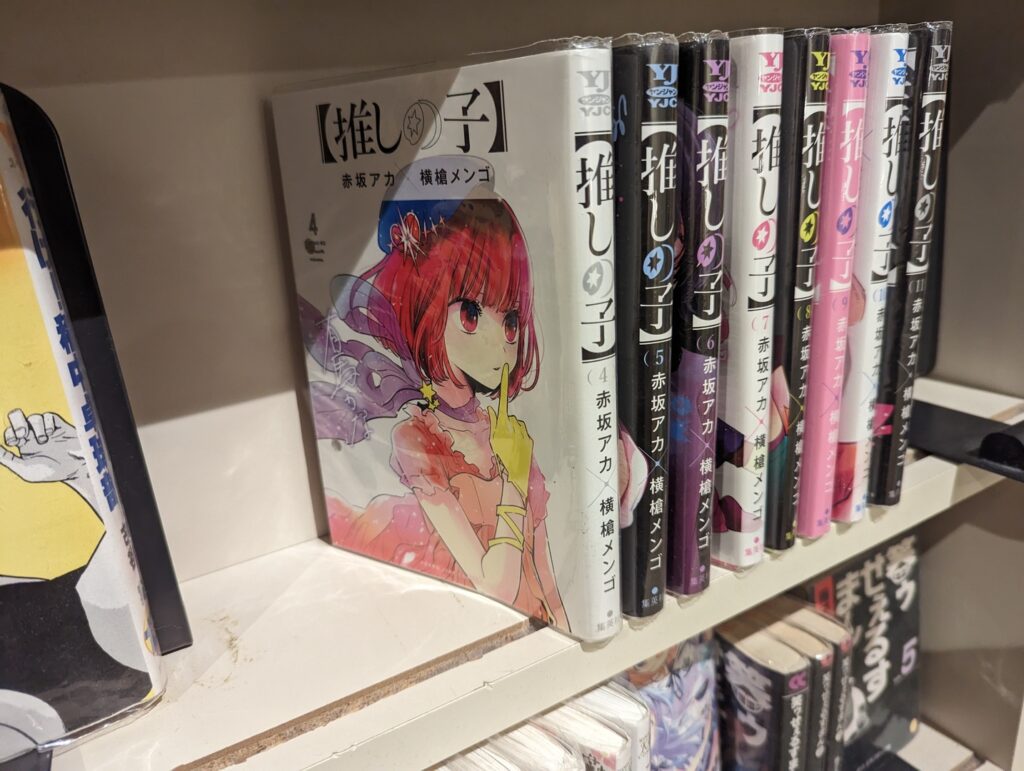
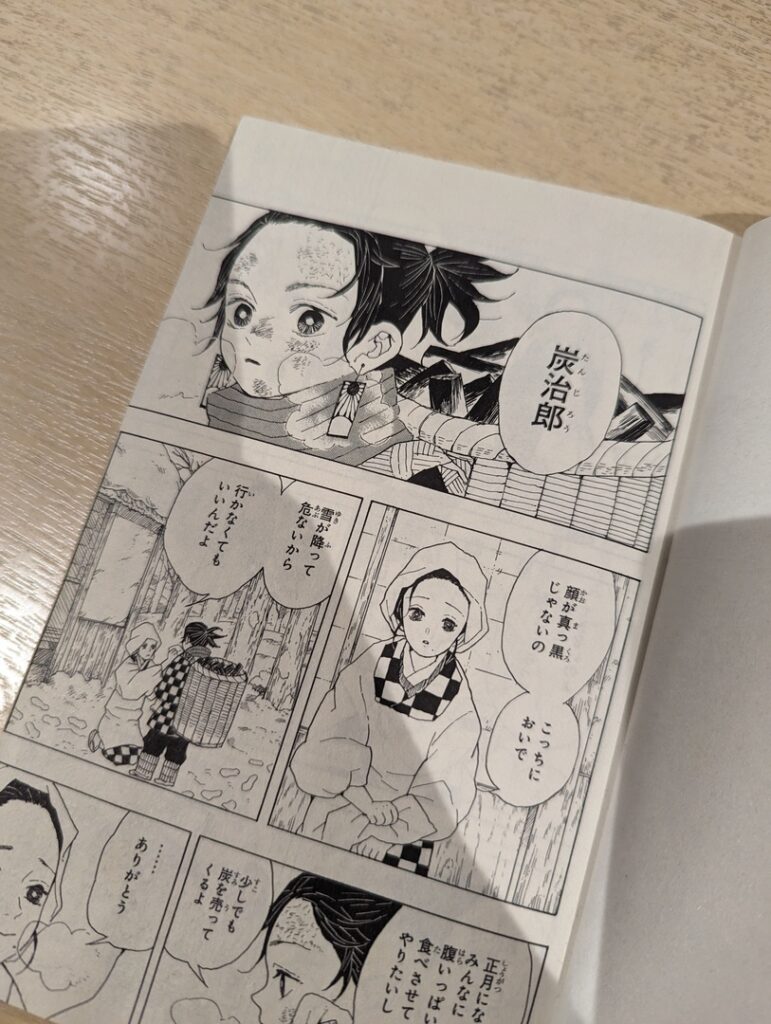
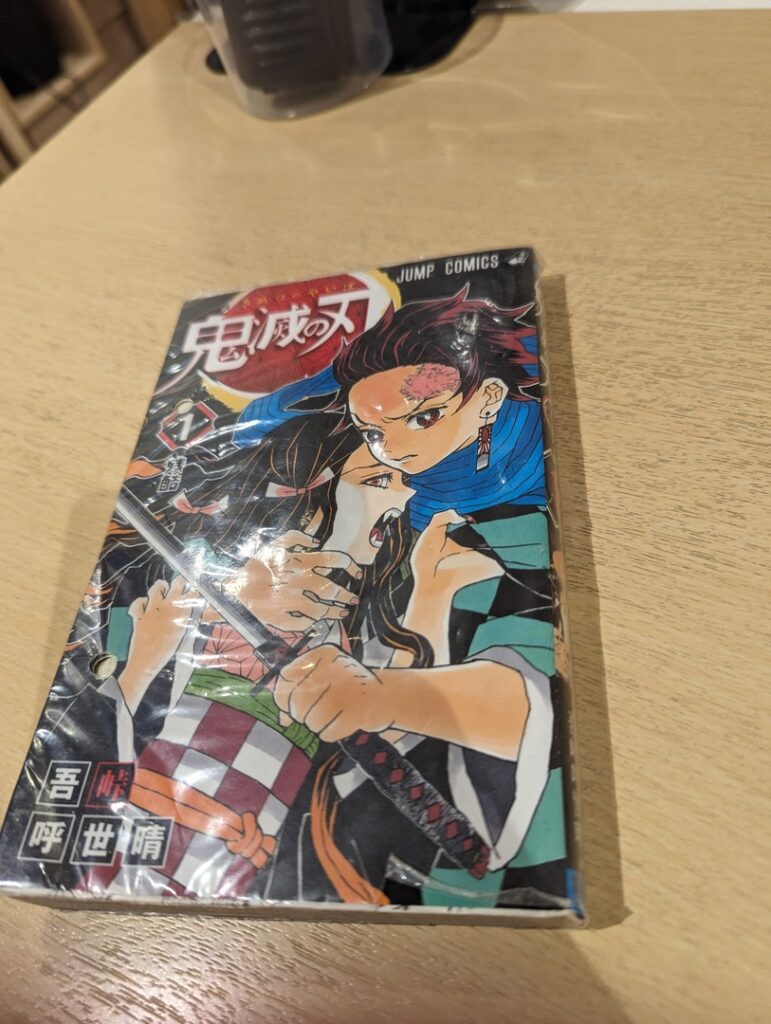
*Onsen – to cite Wikipedia: In Japan, onsen (温泉) are hot springs and the bathing facilities and traditional inns around them. I might be using this word a bit too loosely, but the general idea of an onsen remains the same. Also, the name of the facility says it is an artificial onsen.
*Yukata – to cite Wikipedia: A yukata (浴衣, lit. ’bathrobe’) is an unlined cotton summer kimono,[1] worn in casual settings such as summer festivals and to nearby bathhouses.
Meeting my first friend – Kyoto
I decided to do a big detour on this day. Following the weather reports a typhoon was about to hit Sendai the next day or the day after. Having had all my trains cancelled before, I wanted to prevent this same disaster from happening again. My plan was to go to Kyoto. Just one problem: Kyoto was 800 kilometres away. That’s really far away I thought for a second, but then I remembered I could always take a Shinkansen. About 4 hours later I was already in Kyoto. Without having to go through any TSA, security, or anything. I reserved the seat online (though this was not a requirement for second-class seats), came to the train station, boarded the right train, and was on my way to Kyoto in my comfortable seat! I enjoyed a lovely breakfast and some green tea while enjoying the views of nature. Soon after Tokyo the weather suddenly got really cloudy and not long after it started to rain heavily. You could barely see a hundred meters away – it was raining so much. I thanked myself for having made the wise decision of avoiding the typhoon.
And Kyoto was already in sight! The first place I decided to visit was one of the top 10 places in Japan that everyone must visit: Fushimi Inari Shrine (伏見稲荷大社) most known for its thousands of tori gates that mark the extensive network of forest trails. After a little confusion at the train station (I bought the wrong ticket again), I boarded the train that would get me to the shrine. Upon arrival at the Great Tori Gate that marks the entrance of the Fushimi Inari Shrine, I was met with the largest horde of tourists I have ever seen. I was used to wandering around areas with more locals and just venturing down unknown alleys to find interesting places. This was the complete opposite of it. I did not enjoy the crowds at all. So I went for a stroll and found a nice ramen place to satisfy my hunger. The ramen did not disappoint like usual! With every new ramen that I tried, I grew more fond of it. After that I returned to the Great Tori Gate and on my way back observed many people dressed in kimonos. I saw a lot of kimono rental shops, so this made perfect sense. I would have bought one, but I was already low on space since I only took one travel bag. Soon the big red Tori gate was in my sight again!
In front of it was a statue of a fox. As a matter of fact, there were fox statues everywhere! Hundreds of them. These statues represent the Japanese deity Inari Okami Kitsune (translates to Inari Great God Fox). Inari Okami is the Japanese deity of performing arts, household well-being, business prosperity, and general prosperity. It’s one of the most known deities in Japan in it is whom the Inari Shrine is dedicated to. And so I entered the realm of the Inari Okami, first heading towards the big shrine that marks the start of the forest trails. I took some photos of the big red shrine. The shrine felt majestic with its red and gold colours. The black base and the green roof added to the beauty of the Tori gates and the shrine. A perfect colour combination. The Tori gates can be made both of wood or concrete these days, but I am fairly certain that a lot of the red Tori gates were made out of wood. The sides of the streets also had some street food vendors that mainly offered grilled food, skewers, sweets and the like. There were also many street vendors selling all sorts of other stuff, once again, primarily objects and souvenirs relating to the Shinto religion in some way. I did not linger for too long and set foot to explore the kilometres of forest trails.
A minute or so, and I was already in the forest. And there were Tori gates everywhere. The entire trail was covered with them. Small, wooden, concrete, red tori gates, so close together that they essentially formed a tunnel. And there was just no end to them. There were multiple paths and every single one of them had hundreds of Tori gates. There are around 10.000 tori gates in total, all leading to the top of Mt. Inari. Mt. Inari is also dotted with many stone altars all along the trail. And these altars are accompanied by fo statues almost all the time. The green nature combined with the unique Tori Gate trail makes for one of the best (sort of urban) hiking trails in Japan, The hike took me around 2 hours and along the way, I also saw a couple of souvenir and food shops. Surprisingly, the prices weren’t really much higher than at other souvenir shops, even though the shop (elderly) owners had to bring all the supplies to the shops by hand. There was no road or anything similar leading to these shops – just a hiking trail. It was quiet and relaxing. The weather was also not that hot that day so I wasn’t sweating like crazy. After reaching the top, I sat down for a bit, rehydrated myself and after some time headed back down the mountain.
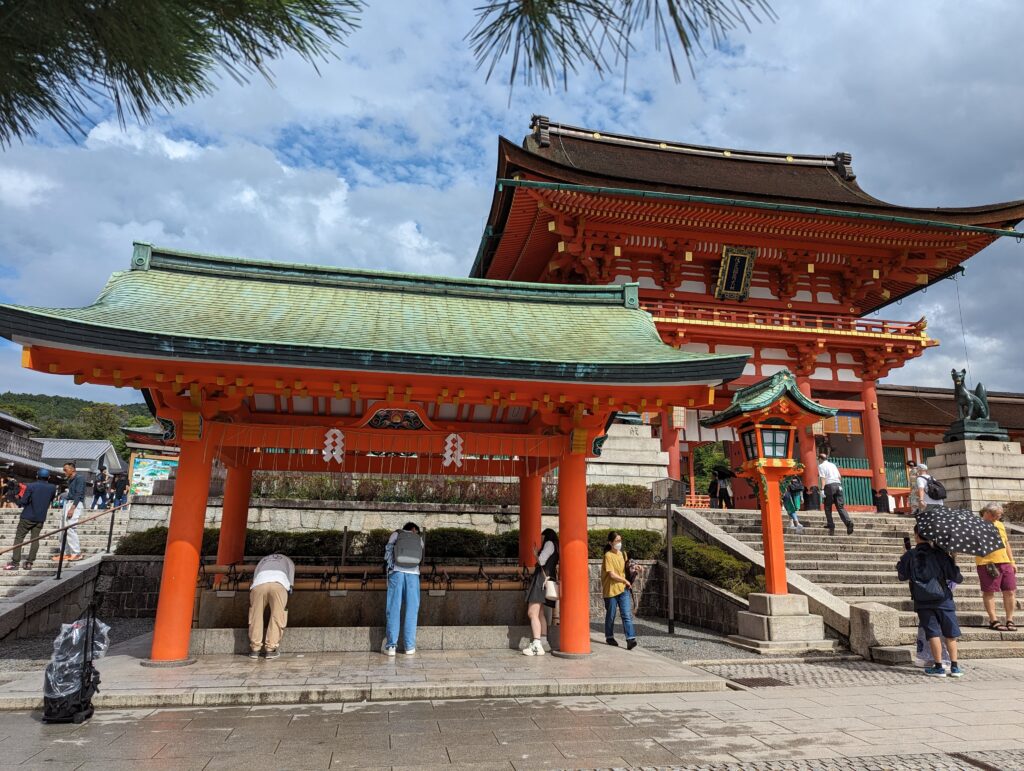

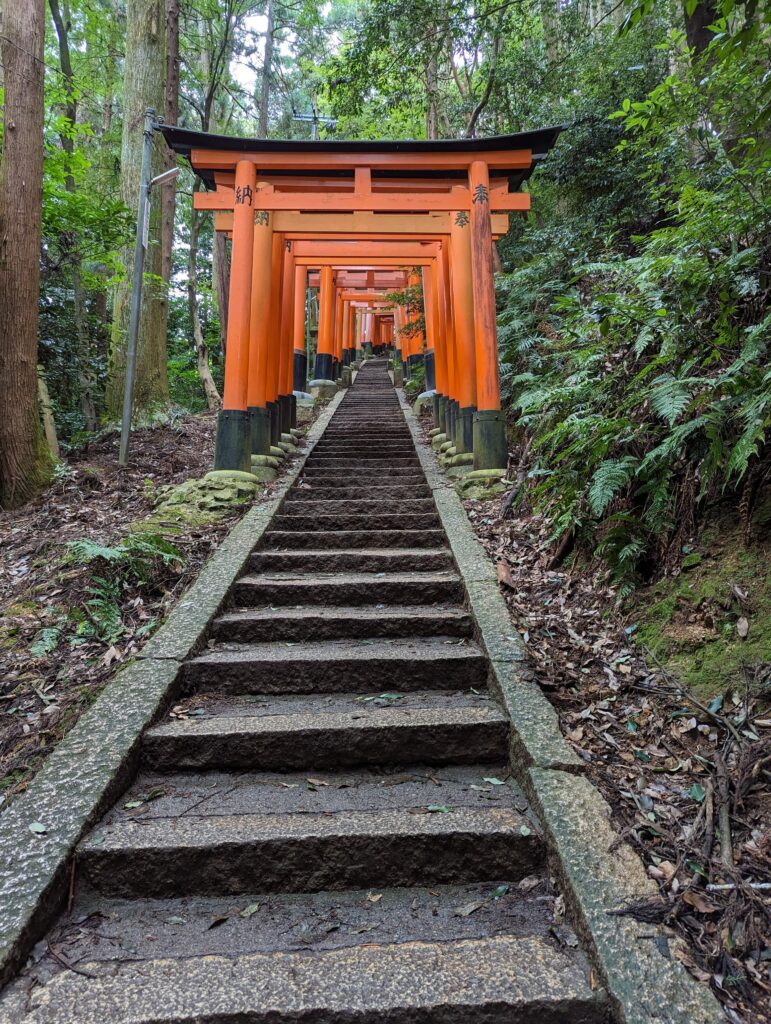

My legs were very tired at this point! I decided I needed some rest. And what better way to unwind after a long day than to head to a cat cafe, enjoy a couple of drinks, and play with the cats. I found a cat cafe near the train station where I got off the train. Following the hordes of people marching through the streets of Kyoto, I soon reached the entrance of the building where the cafe was supposed to be. I saw the sign and there was even a pet store at the entrance of the building. But it certainly did not look like the cafe I was looking for. The entrance to the cafe was hidden inside the building. Cafes, bars, and izakayas were often hidden like this and were not so easy to find. Inside the building, there was an elevator that took you to the cafe. And at the entrance of the cafe, there was a double door. First, you took off your shoes and the second door was for the cats so that they couldn’t escape! So, I took off my shoes like usual, entered the room, and approached the reception. The receptionist/caretaker explained to me all the rules of a cat cafe. The rules were pretty obvious: not picking up the cats, not bothering them if they don’t like it, how to feed them, etc. But I was glad that she explained them carefully to everyone because not every person has a good grasp of how to work with animals. I bought the package with some food and paid the starting fee. Every 10 minutes you spent at the cafe cost you about 1,5 EUR and you had both unlimited drinks and a bunch of cuddly, fluffy creatures to pet. I think it was a bargain, especially because these cats seemed to be very well cared for – their fur was soft and silky and they all looked healthy. My favourite cat was the orange cat with big eyes that stood on my lap while waiting for the food. I dubbed him Pepito for no real reason. When I visit Kyoto again, meeting Pepito again is inevitable. The cats were not very playful but most of them enjoyed being petted and eating the guests’ cat food. The cafe also had a lot of manga and a Nintendo controller for those eager to try some made-in-Japan game titles. The cafe had a great atmosphere and a bunch of places to relax, so I spent more than an hour at this lovely place.

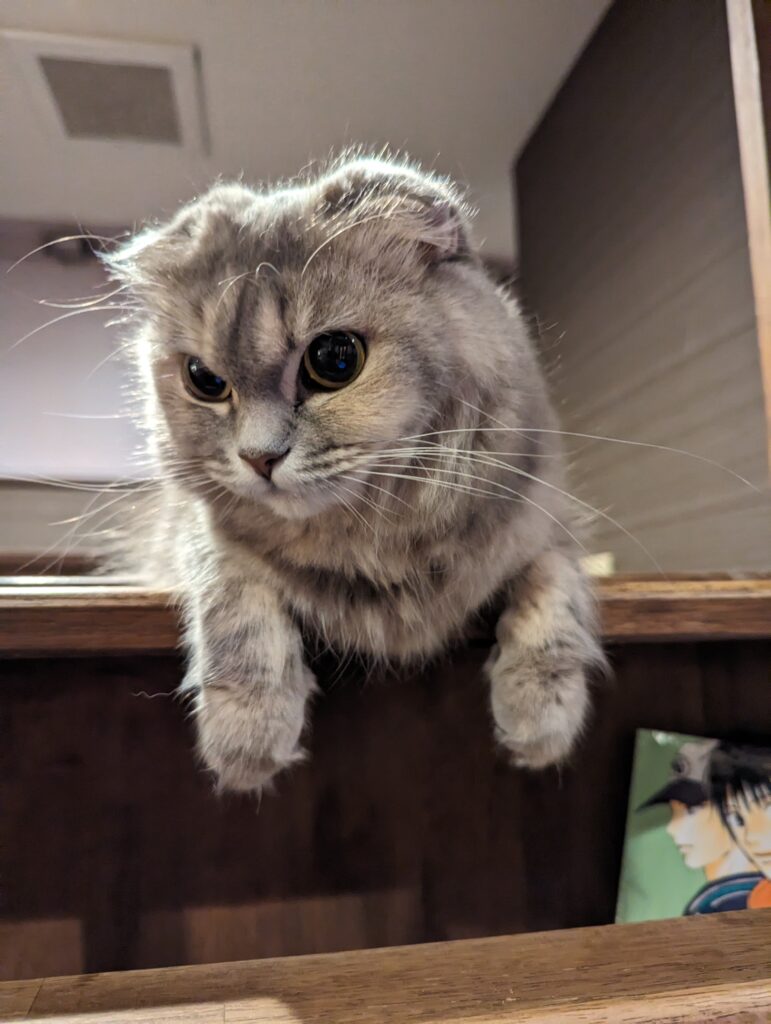
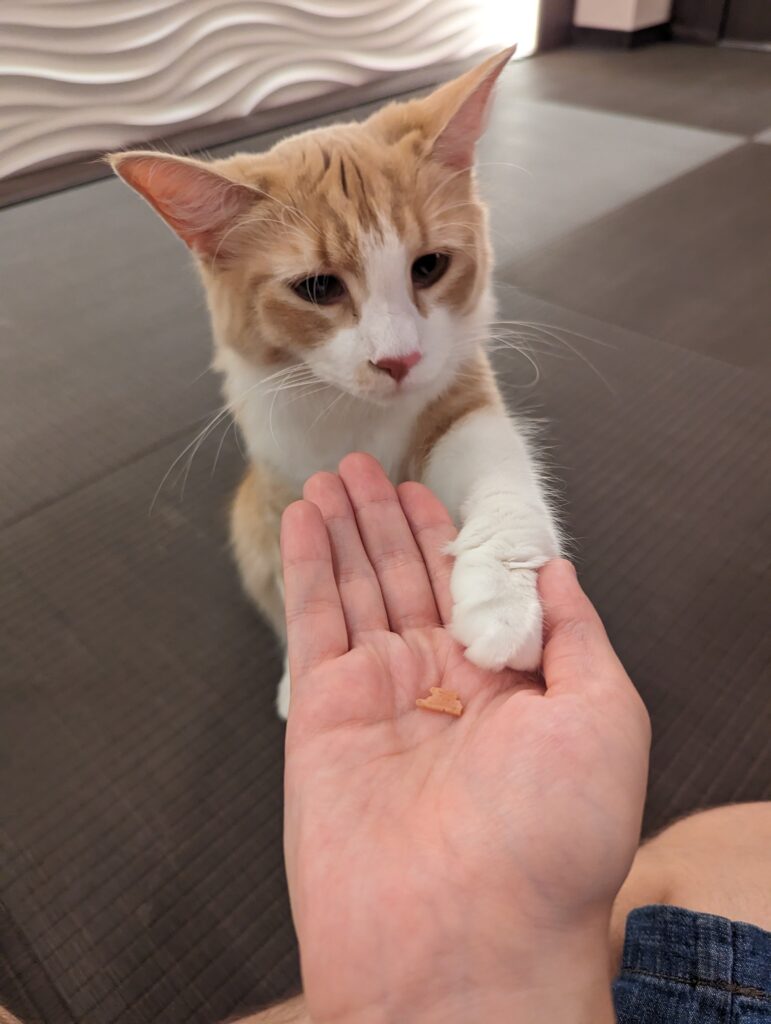
After experiencing the lovely atmosphere of a cat cafe, I headed towards my hotel. I opted for a four-star hotel with an onsen this time. To be fair, onsen was almost a requirement when looking for accommodation at this point. I just really enjoyed it after a tiring day! The hotel was really nice – the beds were really comfy, the bathroom was really modern and I had a decent view of the surroundings out of my window. However, I did not want to spend too much time in my room, so I headed outside to find myself a nice place for dinner. My eyes were first set on a pizza place – the restaurant had great ratings on Google Maps and I hadn’t eaten anything except Japanese food while in Japan up until now. Fortunately for me, the pizza place was full, or things wouldn’t have unfolded as they did. Seeing the pizza place full I had a dilemma about what to do. I found another pizza place on Maps, but this one had much worse ratings, so I did not want to go there. And thus I settled on just about anything. I decided to just wander around until I found something. I passed many places but nothing really piqued my interest. And then I came across a small okonomiyaki place.
For some reason, I just cannot find this same place on Google Maps. I did find the building and its exterior perfectly matches the place that I had been to that night – so it must be it. Well, basically, the place was really small – one could probably fit there 10 people at most. There was a bar counter on the outside of the building where many people gathered for a drink and some chatter. Inside the building though, there was a single grid composed of the takoyaki grill and the normal grill. The grill was surrounded by yet another counter where people, including me, could grab a byte and observe the chef making the food. There were only six chairs in total though. The owner of the place was an old Japanese man and his wife. It seemed they ran this place primarily to gather locals and other people together for a chat, a snack, and perhaps a couple of drinks. The prices and their hospitality certainly reflected that! I thought this was an excellent opportunity to try some Japanese street food, so I headed in and was immediately greeted by the owner with a smile on his face. It was obvious that he was enjoying his work! He seemed to be preparing an okonomiyaki with a skillet and some spices in his hands. His wife on the other hand was preparing the takoyaki using the chopsticks, skillfully flipping them to make them cook perfectly. The smell of onions and takoyaki made me eager to try a new dish! I sat on one of the chairs and greeted the other locals who seemed to be intrigued by the presence of a tourist. I sat down and started looking at the menu. The menu not being in English of course meant, I did not understand everything. The owner realizing my Japanese was not so sharp, handed me the English menu, which I appreciated very much. Even so, I was not sure what to order, so I asked for a recommendation. He pointed at some kind of an onion okonomiyaki dish. I thanked him and pondered about what to drink. Then suddenly on my right, a foreign couple had stumbled upon this same restaurant. They were a bit clueless at first, wondering whether they could enter the place, but were immediately invited by the owner in a cheerful voice, letting them know, they were welcome. They sat next to me and I greeted them with a simple “Hi!”. After that, there was a moment of silence, as they were looking at the menu. I saw them using Google Translate to figure out the menu and offered the English menu to make things easier! After that, I ordered my food coupled with a non-alcoholic drink. Meanwhile, they were looking at the menu even more and then turned towards me. “Hey, I was wondering, what did you order? We honestly have no idea what to order.”. I told them that I ordered the recommended item, but that I did not know this food so much myself to be able to make a recommendation – though I assured them that anything they ordered would probably be fine. They then ordered an okonomiyaki and a takoyaki. Good choice, I told them! We were complete strangers at this point so we introduced each other: they told me that they were both Italians and that this was their first trip to Japan and their itinerary seemed to match mine to a certain extent. We talked about many things: the best places to visit in Italy and Slovenia, food and our journeys in Japan, our lives and so much more. I was delighted by the conversation since I hadn’t talked to anyone except the Japanese up until now. It honestly felt awesome to be able to share the challenges that I faced and the awesome moments I experienced in Japan up until now. The guy that I talked to spoke really good English, not so much his wife, so it was us who talked most of the time. We had a lot of fun while enjoying delicious food prepared by the chef. In the meantime, my food was being prepared right in front of me. First, the chef prepared some meat on the side, and after that made something resembling a pancake on the grill. This was the first ingredient of an okonomiyaki. As the pancake cooked, he added some kind of white crumbs on top of it. My friend and I weren’t really sure what this was, so I inquired about it. Turns out, it was tempura batter. Atop of it, the chef added the previously prepared meat and… A LOT of onions. My friend and I looked at each other and commented on the situation: “Man, that is a lot of onions, haha. I guess if you like onions a lot, this is a great dish.” I agreed with him but had faith in the chef’s cooking skills.

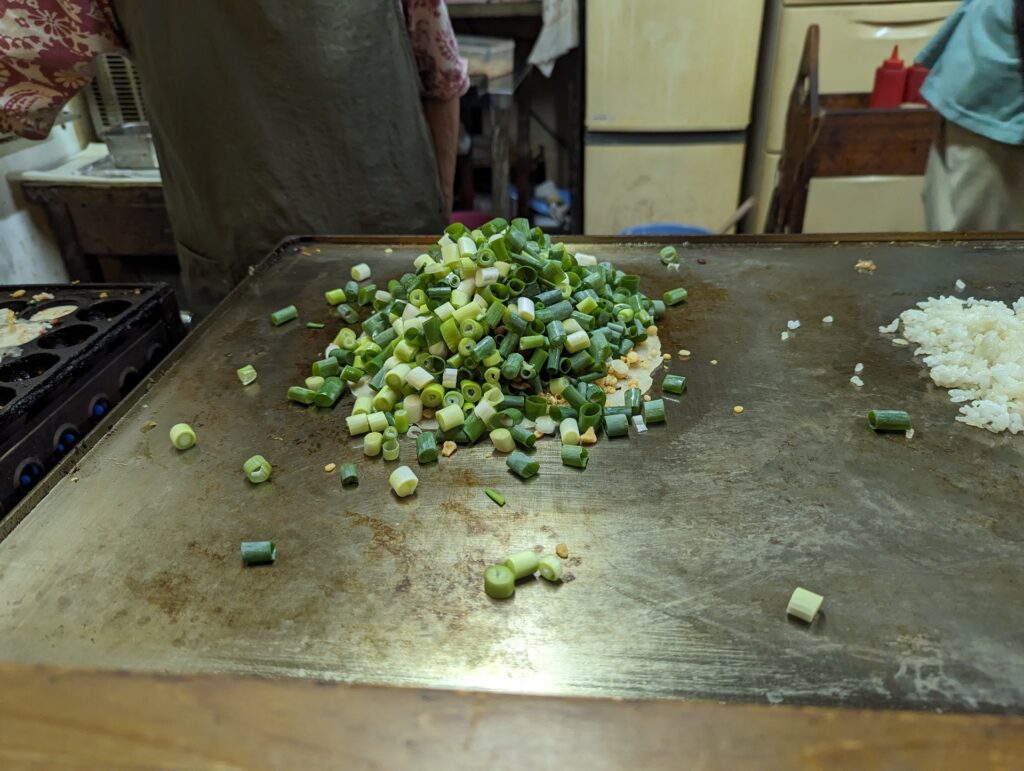
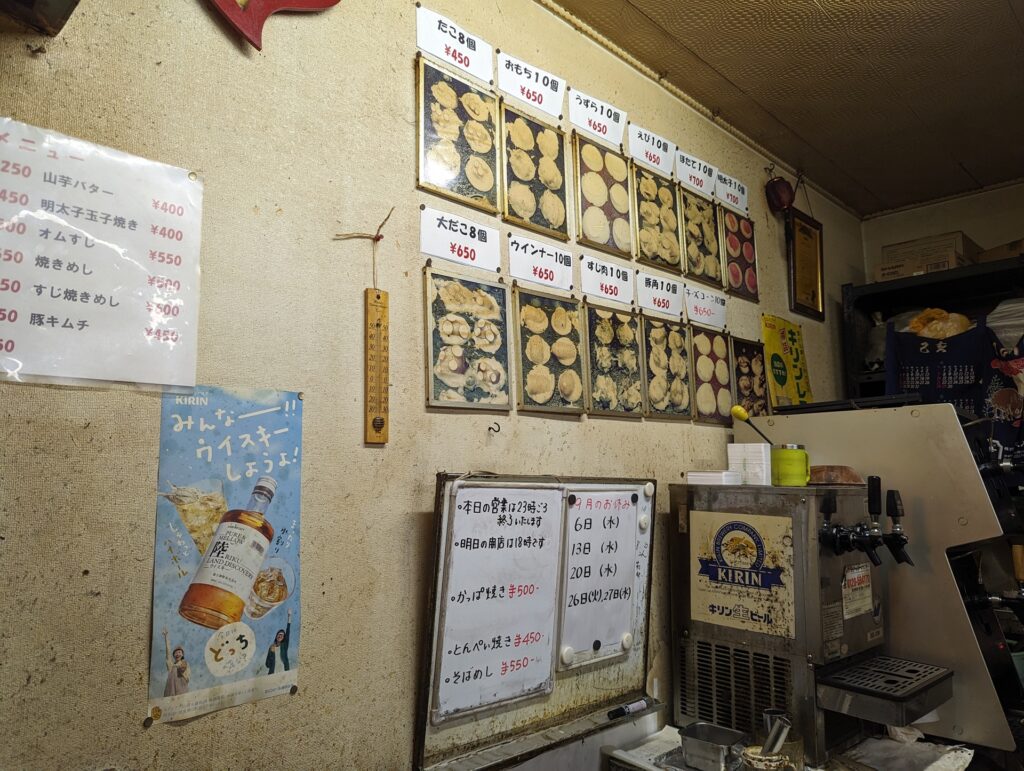
My dish took fairly long to cook. Actually, it took the longest. It was cooked slowly to let the onions release their flavours and to prepare each ingredient separately. The final result was one of my favourite dishes that I tried in Japan. I received the dish and a pair of chopsticks, as did my friend. We dug in and the food was great! Coupled with excellent company this evening was one of my favorites. We tried each other’s dishes and came to the conclusion that mine was the best. Although sceptical at first because of the onion, my friend soon realized that he made a mistake by not ordering the recommended dish like me! I also tried their okonomiyaki and it also tasted great. I especially loved the taste of octopus inside his dish. However, mine, coupled with the given sauce, tasted even better! Having chatted for at least an hour my friend invited me for a drink of sake. Though I was not a big fan of either sake or alcohol, I could not turn the offering down and we said to each other a kanpai*! At this point even the locals joined in on the fun, asking us about where we came from, and telling us that sake really was the best to try. There was a bit of a language barrier, but nothing more than a smile and a couple of repetitions couldn’t fix. The sake* tasted pretty mild and you would only realize you are drinking alcohol after swallowing it. It made sense, why people could drink so much of it without realizing it. We talked for even longer and exchanged our information, but after more than two hours it was time to head home. I was hoping we could meet again, but our paths split the next day: they were heading to Hiroshima and I was still staying in Kyoto. Another great memory was made and I headed home with a happy face, appreciation for a new friendship, a full stomach, and looking forward to using the onsen at my place. I sincerely enjoyed the friendliness of the owner and the company of the couple, making this one of my favourite days in Japan.
*Kanpai – In Japanese culture, “kanpai” (乾杯) is a traditional toast during social drinking, symbolizing shared celebration and camaraderie. The term means “dry the cup,” reflecting the act of raising glasses for collective cheers.
*Sake (酒) – Sake is a Japanese rice wine, enjoyed in various settings.
A place that I will never forget – Hiroshima
Hiroshima definitely left a big impact on my trip. It was a place where I was both most shocked and a place where I met so many new friends. And so my trip began at the memorial that Hiroshima is most known for, The Atomic Bomb Dome – the exact place where a nuclear bomb was dropped during the Second World War. This bombing combined with the nuclear bombing of Nagasaki resulted in thousands of deaths and consequently the end of WWII on September 2, 1945. Despite the bombing, the dome still stands today. It feels out of place. Preserved the way it was left after the bombing to remind the people of the horrible consequences of a nuclear bomb. Coming to this place after watching the Oppenheimer movie made the whole experience even more emotional. I stood silently in front of the building and just stared at it for several minutes. Not being bothered by other tourists and thinking about the destructive power of a nuclear weapon. And how the world we know could end, were a single bomb dropped, causing a chain reaction that could potentially end mankind. A terrifying thought.
Just as Prometheus’ gift brought both progress and peril, the preservation of the Atomic Bomb Dome urges us to tread carefully with the fire we now wield, understanding the profound impact it can have on the world we share.

You might be wondering, how on earth did this building survive the blast when everything else around was literally razed to the ground. Almost no other building was left standing. A single bomb killed tens of thousands of people in a single blast, with total casualties being estimated at up to 300.000. By a single bomb. And yet this building stands as a reminder of a horrible past. It is because the bomb was detonated exactly above the building, which meant the shockwave was parallel to the building’s walls and left them standing. The power of this nuclear bomb, called Little Boy, is estimated to have been about 15 kilotons of TNT, which is still more than 3000 times less than the strongest nuclear weapon ever tested – the Tzar bomba.
After feeling all those emotions at the Atomic Bomb Dome, I needed some comfort food. I found a local spot and ordered a bowl of tsukemen, which is like ramen but without the soup. You dip the noodles and toppings in a separate broth using chopsticks. I went for a spiciness level of 3, marked by two chilli peppers. It was pretty spicy but just right for me. I might go even spicier next time on my summer trip to Japan. Digging into the dish, it didn’t become my favourite. It was kinda basic and didn’t have the usual Japanese flavours I love. Still, I’d recommend it, especially if you’re in Hiroshima. Don’t forget to try okonomiyaki too, but I’ll talk about that later. What made the tsukemen interesting was the dipping part. The sauce was spicy with sesame seeds and oil, giving a nice kick to the otherwise simple ingredients. I’d rate it a 6/10. Looking forward to figuring out the spice levels on my next trip!
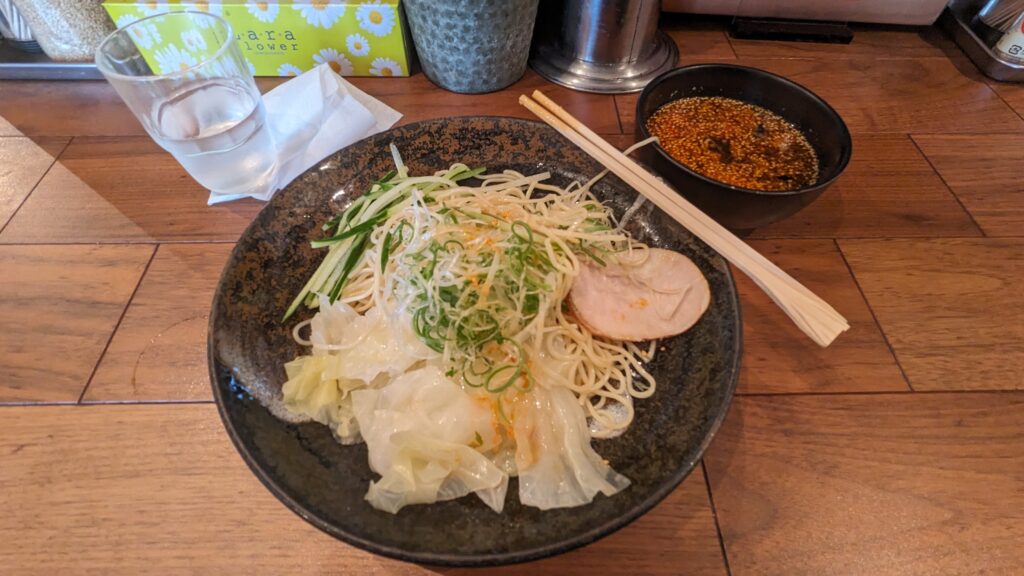
My stomach was full so I headed back to the Peace Memorial Park near the Atomic Bomb Dome. I decided to visit the Hiroshima Peace Memorial Museum, making an exception to generally not wanting to visit any museums. I was really interested in the history of the place and wanted to deepen my understanding of what happened at 8:15 on September 2, 1945. I headed towards a big modern building and tens of people in front of it. Most of them lined up to enter the museum. I followed them and entered the building myself. The museum guides directed the line of people to the ticket counter. After waiting for about five minutes it was my turn to buy the tickets. They were extremely cheap, costing just 200 JPY (that is a bit more than a euro). After that, I was offered an audio guide and given directions on where to continue my tour through the museum. The staff was very polite and everything was very well organized. The museum was very well thought out from the beginning to the end. And thus began the exhibition – one of the most impactful museum exhibitions that I have seen up to date. It presented everything about this tragedy, from how it happened, to all the horrible consequences that followed. How the bomb exploded and how everything in a radius of around 2.4 kilometers was razed to the ground. The museum presented in gruesome detail, how people lost their families, how people died from either the direct impact of the bomb or later from cancer or from their skin literally falling off. Up to 300.000 people suffered various gruesome deaths. The museum presented all sorts of personal items that were left behind by thousands of victims, as well as their stories, describing everything in detail. About children having lost their brothers and sisters, having them lost forever. I just walked around in silence and almost shed some tears. At the end of the exhibition, I entered the museum store and bought a book with the title 8:15, the time of the bomb being dropped. It is a very touching, sad book, and I would recommend it to anyone who would like to learn more about this infamous event through the eyes of a person who lived through this and survived it. Unfortunately, I did not take any pictures. To be frank, I really wasn’t in the mood. I felt pretty gloomy after exiting the museum, but here is a picture of the museum from the outside.

After a long day, it was time for me to head to the hostel. The reason why I chose a hostel was because there was nothing else available in Hiroshima – that’s because I was reserving the booking only a day in advance. I booked 3 nights and was not looking particularly forward to sleeping here since I disliked hostels very much. I still don’t like the hostels themselves even to this day, but what comes with a hostel, made my trip to Japan an unforgettable one. I met a new friend.
After looking around for a little bit I finally found the hostel. I had to find one of those sorts of hidden entrances again. Honestly, it all felt like a part of an adventure – always on a hunt for something. I tried to make every experience a part of my adventure. At last, I reached the hostel. My expectations were not high, and yeah, things were about as good as I expected. The rooms were really basic – a bunch of beds with tiny sheets that couldn’t even be fully covered with the provided cover. The pillow had plastic balls inside of it instead of being fluffy. It was comfortable enough for me to fall asleep, but it certainly was not comparable to a normal pillow. The showers also weren’t the best – they were quite dirty to be fair. A bunch of hair on the sides, the floors were wet everywhere, and the water was cold one of the times. Not nice! There was also a shared space where you could meet new people, hang out, or just grab a snack – there was a kitchen where you could warm up your food and a bunch of other useful utilities. I did not intend to utilize the space at all. Thus I headed to my room – or rather to my bed, since there was no private room. It was mainly the lack of privacy that annoyed me most about the hostel.
So, I was sitting on my bed and browsing my phone. I think I was probably scrolling through Twitter (or perhaps I should have called it X?) or watching YouTube. Lots of time passed and then another person came in the room – I thought I was going to have to room for myself at first but this wasn’t the case. I greeted him but didn’t think much more of it. Some more time passed and then this new guy came up to me and extended an offer for a meeting of people from different hostels. I gladly accepted the offer and proceeded to go with him. It was the start of a new friendship. First things first, we introduced each other – he was a little bit older than me and came from America. He was the first American (and foreign) friend that I got acquainted with. And I had a lot of questions to ask him – America was an interesting country for me and I wanted to know more about it – from the perspective of a person that actually lives there. Questions about food, supermarkets, cars, the style of living and so much more. We made several comparisons to both Japan, America and Slovenia and came to the conclusion that Japan and America had quite some things in common: various food and supermarkets for example, but on the other hand Japan was of course so much different from America in other aspects: culture, no guns, the style of living and much more. I also introduced him to Slovenia, which he said, he had not visited before. As much as I love hating certain aspects of my country – primarily public transport, as a tourist, Slovenia would be a must-visit place for me. We discussed all these things and more and slowly arrived at our destination – the meeting point. We used an app called Hostelworld to find the exact meeting spot and the rest of the group. Waiting on the side of the road, we spotted a group of people on the other side – they were all foreigners, which made us suspect, this was it. And it was. We joined the group and suddenly there were 15 of us – 6 more than planned initially. There were many different people from different countries: Slovenia, Austria, Columbia, Germany, Israel, America, Canada and many more. We introduced ourselves and then headed to a nearby izakaya place – it was a place full of different izakayas*. Tens of people gathered in a small place to get drinks and food. We tried finding a spot for ourselves but our group was too large for everyone. In the end, our group split into three or four smaller groups – ours was a group of four: me, my American buddy, the Israeli guy, and the Columbian guy, whom I saw for the last time that night. We couldn’t find any space in the izakaya that we were currently in, so we decided to head out and find another place.
*Just recently, while watching another one of the Japanese travelling vlogs, I came across this exact same place with multiple izakayas. Turns out, this is the most popular spot in Hiroshima for trying out okonomiyaki. It’s quite unfortunate that we did not get a seat because the okonomiyaki is supposed to be the best there!
It didn’t take us too long to find a small Izakaya restaurant. We entered the restaurant and asked for a table of four. The restaurant was very busy but we were offered seating if we waited for another 10 minutes. And so we waited. After that, we were escorted to our table and given the English menus to order some food. It was fairly late, so we were able to order food only twice (not that we could eat much more haha). We each ordered some drinks and all of us ordered okonomiyaki. Some of us with the udon and some of us with the soba noodles. I ordered the soba noodle one, coupled with some veggies and an octopus. It tasted really good – the best part of it for me was the spices and sauce used to make it. If I had to guess the okonomiyaki sauce was made of sugar, ketchup, oyster sauce, and probably some other ingredients. Exquisite!

Meanwhile, we were each sharing our stories with each other. I found a lot of common points with the Israeli guy – he was also a programmer and worked in the military for quite some time. He had a lot of interesting stuff to tell regarding his job as a programmer. The Columbian guy also had a very interesting story. While his English vocabulary was a bit lacking, he managed to express himself really well! I found him to be very entertaining. He also told me, that he would be able to guess my job and he said I was probably I programmer. Spot on! Amazed by his deduction skills and furthered our conversation to find out more about him. And the last person that night was my American buddy – we had a lot in common, especially our love for travel. He apparently started the trip with his friends, but after two weeks or so, his friends headed back to America, while he stayed in Japan for some more time. Luckily for me and him, we found each other and kept ourselves company. But the evening was far from over at half past nine. We decided to keep the momentum going and searched for a bar, where we could spend some more time chatting. At first, I opposed the plan in my mind, but since my buddy decided he also wanted to go, I said to myself that it might be worth going there. So we opened Google Maps once again and searched for a well-rated bar nearby. It didn’t take us very long to find a bar with a sort of non-Japanese name: Ken’s Bar. We thought this might be an interesting place and headed there. Upon reaching the place on Google Maps, we couldn’t find the entrance at first. It was sort of hidden by the small staircase that you had to take to get into the bar. The sign pointing you to the bar was also easy to miss, but we did manage to find it eventually. It was my first time going to a bar like this – I am not a party person at all, nor do I drink alcohol – but I was willing to give it a try here in the foreign land. And it certainly paid off. I am just going to put my Google Maps review here, so that if you ever happen to be in Hiroshima and are in search of some nightlife, then this is the place to go to:
My review of Ken’s Bar: This is just an amazing bar, the number-one bar in Hiroshima! It is a little bit hard to find, especially if you are not used to the often well-hidden Japanese bars and restaurants that have a small staircase leading up to them. Though it shouldn’t be too hard to find – just find the Ken’s bar sign and then go up the stairs until you reach the bar. The bar itself has a really nice atmosphere, cool music, friendly people and so much more. It is foreigner-friendly, the drinks are really cheap – 500 JPY per drink and the barman makes the whole experience even better! He speaks both Japanese and English, recommends drinks, partakes in various bar activities, etc. So yeah, if you want to have some fun in the evening, this is the place.
The evening experience was great: we talked a lot, listened to some great music, and had a lot of fun. I decided to just stick with non-alcoholic drinks that evening, so I just ordered a Red Bull. The drinks were pretty cheap compared to other places: 500 JPY per drink, and it did not matter what you ordered. At some point, the people at the bar counter and the two barmen (one of them was the energetic Japanese/English-speaking guy Ken and the other was a Japanese woman, who also did not lack any energy) started discussing the fact that I was from Slovenia. Judging by their conversation, they were probably wondering what country this is and I don’t blame them – Slovenia is a very small country, a hidden gem of Europe as many people call it. And after discussing it a bunch, familiar sounds started playing on the TV – it was Slovene music. Intrigued by the music the barman approached me and asked me about the song. Not being too familiar with the music in my country I just assured him that this was the music that I am familiar with. It was not the classic folk music, which I would have preferred, but some pop music. In any case, I was glad they took an interest in my culture as much as I did in their culture. And after that came the main event of that day: my American buddy decided to order a cocktail of some sort. Since he had no preference, he just asked for a recommendation. A couple of minutes later, the barman came back with the drink. The drink’s name was the B-52 Bomber. A very fitting name considering the city we were in, we thought, with a smile on our face. The barman explained what the drink and the plane were all about and then lit a fire on top of the drink. The drink then had to be consumed quickly before the fire went out. It looked really cool! A burning fire – just like a bomb… Yeah, seems like the Japanese still have a sense of humour, even though they are not famous for it. The evening ended with a trip to the convenience store, some more drinks and some snacks, and after all of that my buddy both headed to our hostel. After that, it was time to wish each other a good night at midnight.
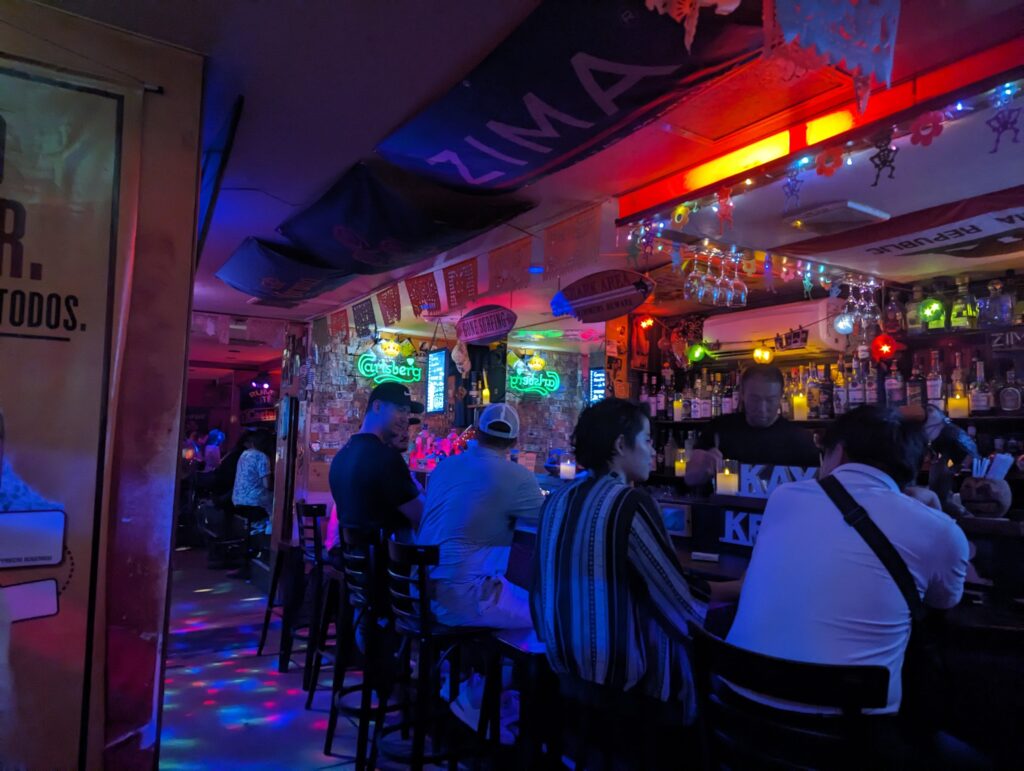
My final thoughts
As I explain at the end, I have omitted some cities, including the last two: Beppu and Izumo. I will most likely write at least about Izumo in the future. There is a lot to write about, I just have to find the time at this point. It’s where I met even more friends, enjoyed my time on the Kirara beach and met one of the most hospitable and kindest people ever! However, this is a story for another day.
This post – if I should even call it that, took me a very long write. Mostly because I stopped writing multiple times, and continued much later on. Multiple weeks, writing a little bit every day. It might be a bit of a mess, but I just wanted to write my experiences down. However, now it’s finished. Who is this dedicated to? No one really. all I want with this is for me to have a memory of the past saved somewhere and at the same time let other people read about my journey and perhaps learn something new about travel, Japan, or simply about me. It was an unforgettable journey that literally changed my life. It was a journey that set my goals straight: I want to move to Japan someday. And with each passing day, the goal is getting closer.
Q&A
What place left the biggest impression on you?
This was not an easy question for me to answer. It still isn’t to be fair. I had such a great time in Japan that I simply cannot out a single place as being the best. But I suppose I have to pick one for the sake of answering this question. Well, starting from the beginning, when I think about Tokyo, well, as interesting as I found it to be, Tokyo definitely is not on my list of best places in Japan. The main reason is that the centre of Tokyo basically reminds me of yet another metropolis if I forget about the people, the restaurants, and everything. The public transport is also great, probably the best in the world, but the city itself made me want to leave it after a week. I could certainly see myself spending a month there if I didn’t know how many other great places there are in Japan. The only exception to this was Enoshima, but that is a different story because that place holds a certain meaning for me. Akihabara was also great, but I would not put it at the number one spot. After that was Kyoto, which left a really good impression on me – the Thousand Tori gates were probably my favourite part. Nara, Kobe, and Osaka were all great as well! In Hiroshima, I met many new friends and a travelling companion, whom I am still in contact with to this day. After that was Beppu, which probably settled itself as my favourite city. In the end, Izumo, where I met two extremely friendly locals. It is indeed a tough choice, but if I had to choose… Sorry, I just cannot choose. But what I will say is that Hiroshima, Kyoto, Beppu, and Izumo were places where I had the most fun. It’s where I met the most friends and tried the best food, and it’s where I felt I was on an adventure the most!
Then, which place was least memorable?
Well, I suppose that would probably be Nagano. Were it not for Enoshima and Akihabara, this spot would be claimed by Tokyo. It is not that Nagano was a boring place. I got to explore a beautiful temple and ate really good food. But in the end, there wasn’t that much to see there – at least for me. However, it is also true that I still had a cold at this point, which forced me to wipe my nose all the time. Perhaps I just did not prepare myself enough. So yeah, I am choosing Nagano.
How was the food?
The food was amazing overall. And also amazingly cheap. In the last 3 or 4 years I have never eaten so cheaply and so well at home in Slovenia. Recently the prices at home went up significantly. But in Japan, anywhere I went, the food was great and it was always cheap! However, it is important to mention that this is largely due to the value of the Japanese yen falling in recent years. I never paid more than 10 euros for a dish and often for lunch. Such a price was unimaginable at home at the time of writing. The sushi was great. Even though I never had a liking for fish, I tried sashimi multiple times in Japan. Each time, it was great and the prices were very reasonable. Ramen was probably my favourite dish and man, it tasted so good! Not so long ago I went to one of the Japanese restaurants in my city and I have to tell you: it doesn’t come even close to what I ate in Japan. Though I call it the “forbidden ramen”, since it is covered in cheese, one of the best ramen that I tried was Nara. Every other ramen that I ate was also great. The one in Nagano had such a flavorful broth, served together with an egg and some pork belly, that I crave the taste of it to this day. The next best thing for me was the rice bowls. The one I had in Kobe with the Kobe beef had one of the best beef seasonings I have tasted to this day. The yakitori* that I ate in izakayas*, tasted different than the ones we eat on the grill at home. I liked it better. The story is pretty similar for all the other dishes like okonomiyaki and takoyaki – I loved them all and there was not a single dish that I didn’t like.
*Yakitori (焼き鳥) – A Japanese chicken skewer.
*Izakaya (居酒屋) – An izakaya is a Japanese pub, blending “i” (to stay) and “sakaya” (sake shop). These casual spots offer sake, beer, and shareable dishes (“kappo”). Known for fostering a relaxed social atmosphere, izakayas are popular for after-work gatherings.
Why did you come to Japan and why will you go again?
This was the question that I was asked as soon as I arrived at the airport after being interviewed by one of the Japanese TV stations. Initially, I gave a pretty generic answer: because I love Japan’s culture, food, movies, and anime. A pretty boring answer I think. However, after being there for about a month I think I have a much better answer. I am planning to come to Japan again, because of so many things. First, there is the order, politeness, hospitability, and kindness of people that I experienced in Japan. It is unlike any other place that I have been to in this regard. People follow the rules and respect each other’s privacy and peace everywhere they go: on the train, in the restaurant, in an onsen. It’s something that is becoming less and less common around me, where I live. Second is public transport, which is unparalleled in big cities when compared to the rest of the world. Third are the supermarkets and the food: they are open 24/7 and always offer tasty, cheap food. The same goes for restaurants and other places where you can get some food. Then there is the picturesque nature that is mixed with Japan’s culture and history creating a world of mystery and awe. There is also the country’s culture, which I love and respect even more than I used to. And there is even more: the simplicity of day-to-day life, the ability to travel almost anywhere without a car, the vending machines, etc. I could spend the whole day just talking about everything I liked and am looking forward to seeing again.
Some cities are missing in your post. What about them?
Due to time constraints and the lack of willingness to write about literally every place that I have been to I have left some of the experiences out of this post. All the experiences that I’ve had were great. Everywhere I went I found something interesting. But some places were more interesting than others, so I left them out. One such example is Nagano, where I went to see the famous old temple and to try out the Shinkansen for the first time. I have also decided to not write about everything I did in Tokyo due to it being the least memorable place overall. I enjoyed the smaller cities far more than the metropolis of Japan! I also left out Matsushima, even though it was one of my favourite places. But I might get back to it someday later. Plus, I will most likely visit it again this year. This beautiful coastal city of Japan was also recently featured in Abroad in Japan’s series Non-Stop-North, where Chris went on a 21-day trip across the north of Japan. I recommend you watch the series yourself! It’s really interesting, full of humour and presents one of the most interesting aspects of Japan: the hot spring village, the ramen town, the Fukushima disaster, hostess bars, and kei cars, … Actually, I am throwing a bunch of other places out of this post as well, since it will never be finished otherwise. Nagano, Nara, Osaka, Kobe, Miyajima, Beppu, Okunoshima, Miyajima. If I find the will, I might write about these places someday in the future. In addition to that I am attaching some nice pictures with descriptions below. Though, for now, I have a bunch of other ideas to write about. I would also like to add, that I will be writing a separate post about Izumo since it was the core experience of my journey. But that will be in the future.
So, below I am attaching some more photos from my journey. I hope you find them amusing.
